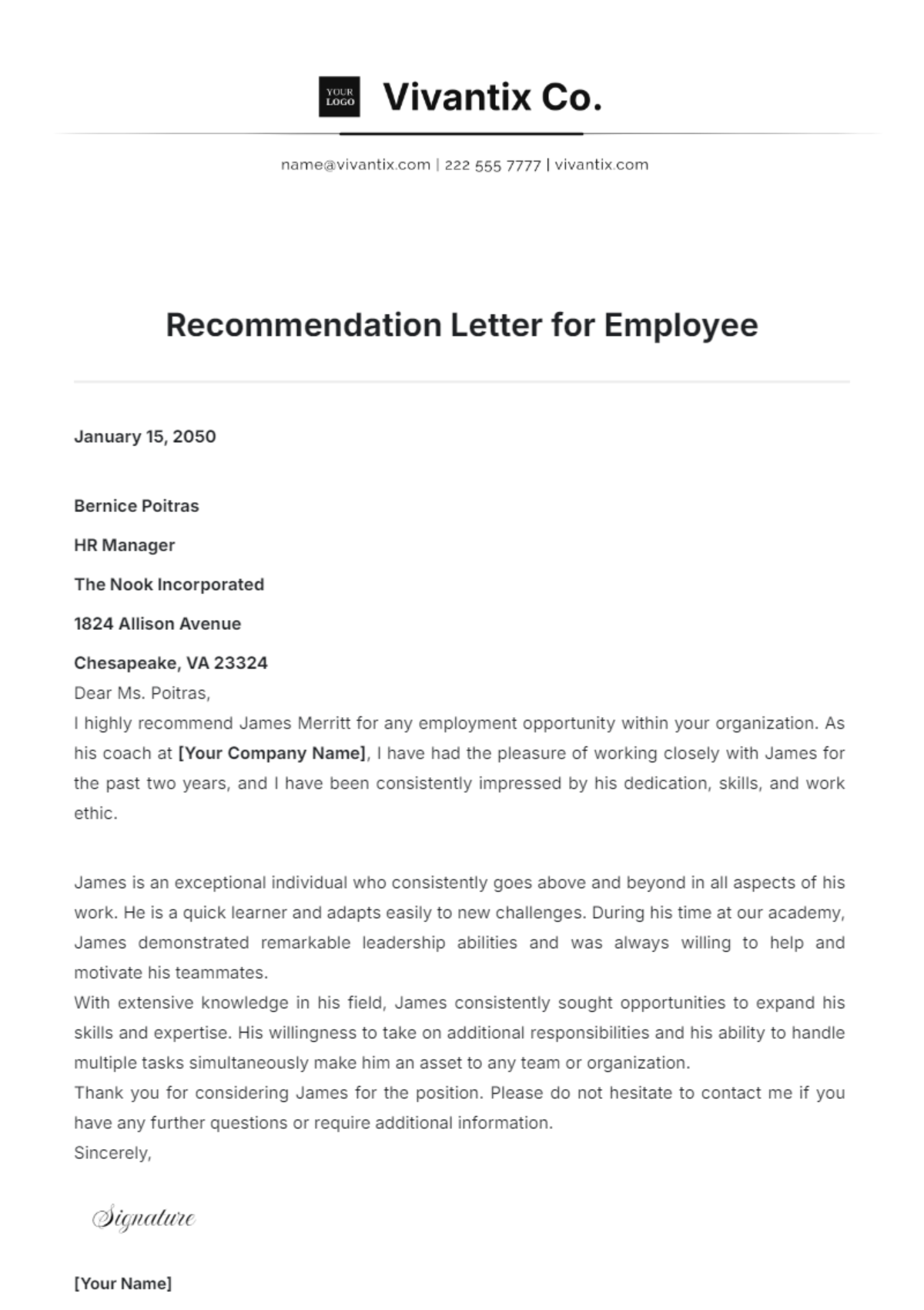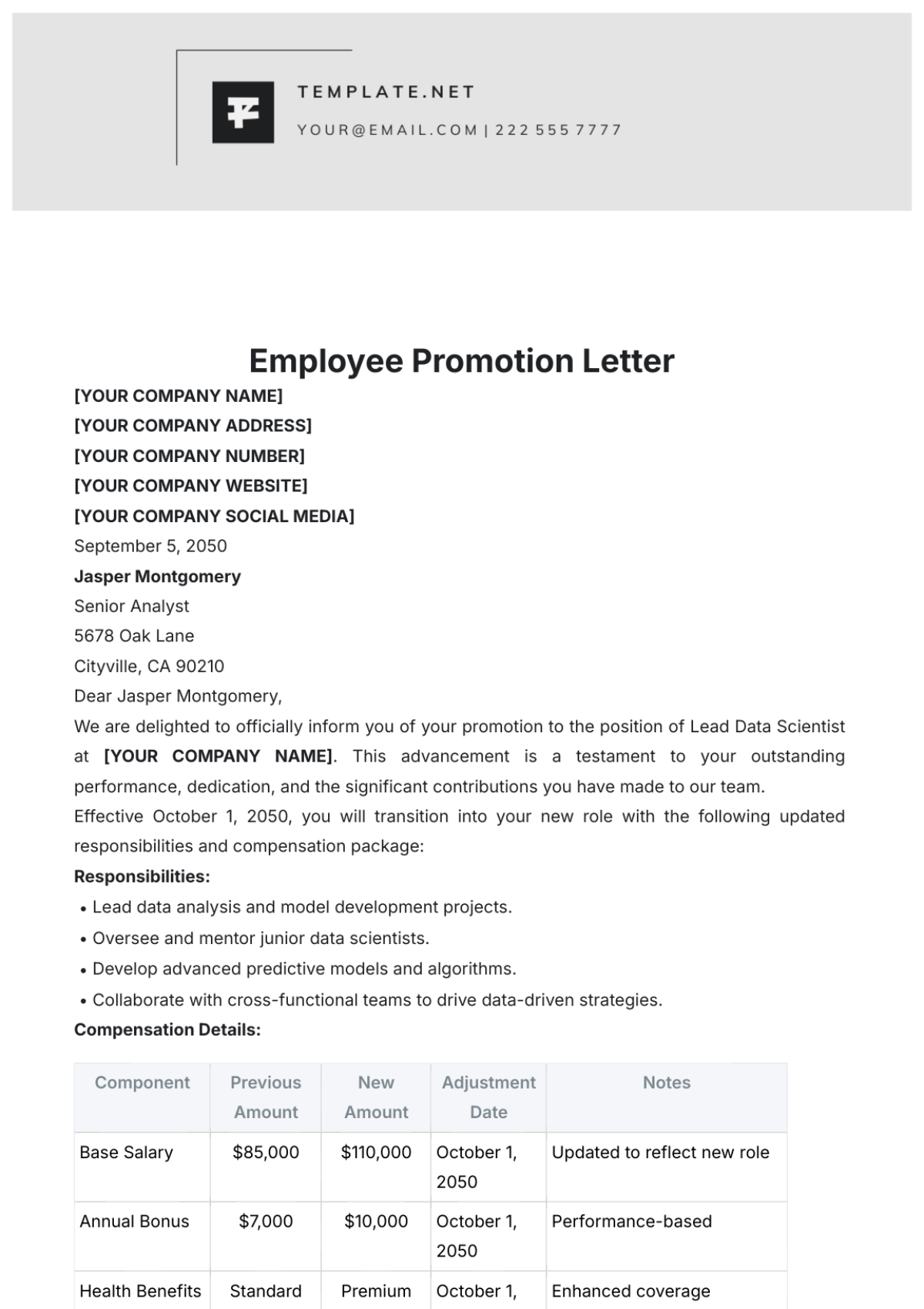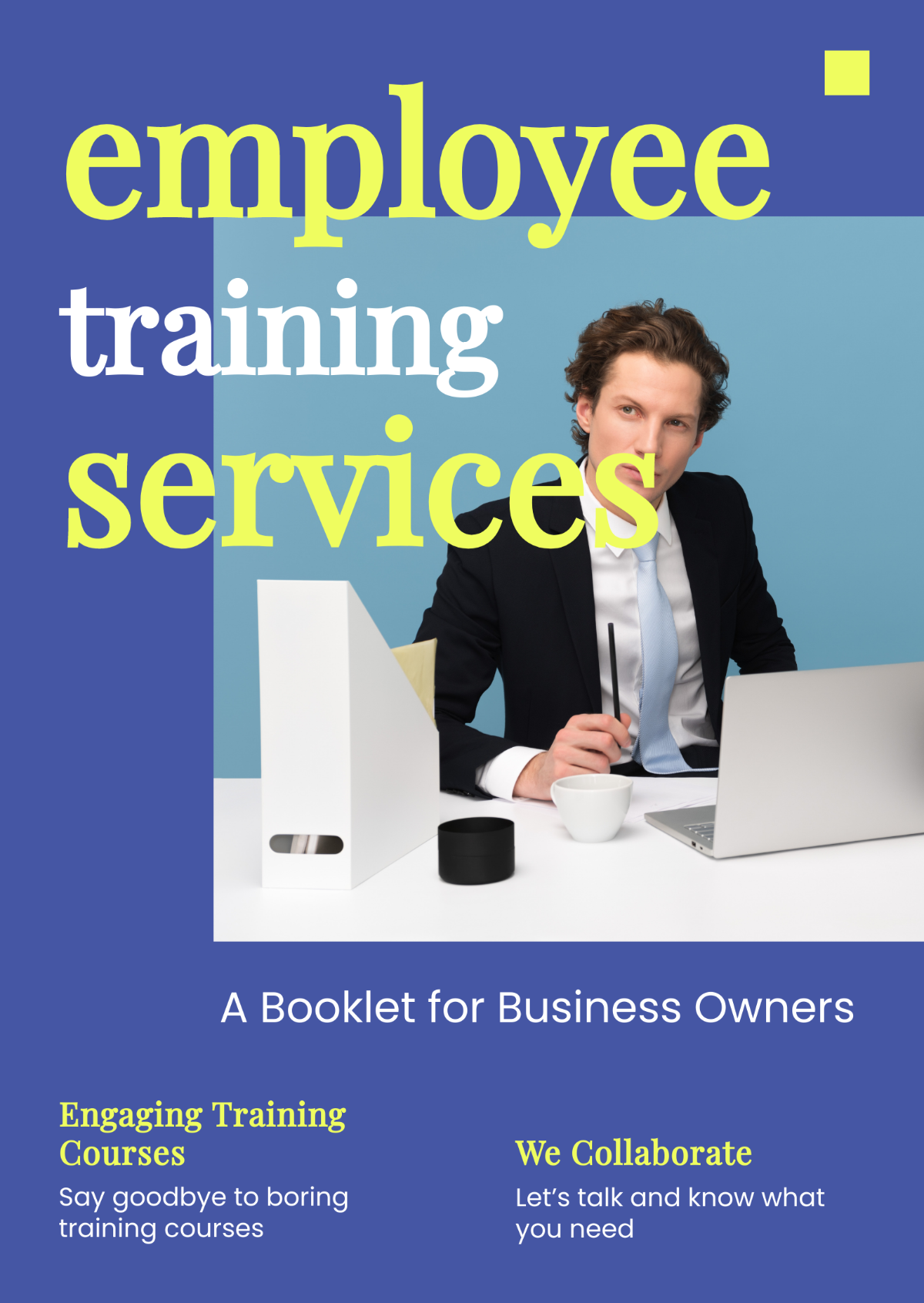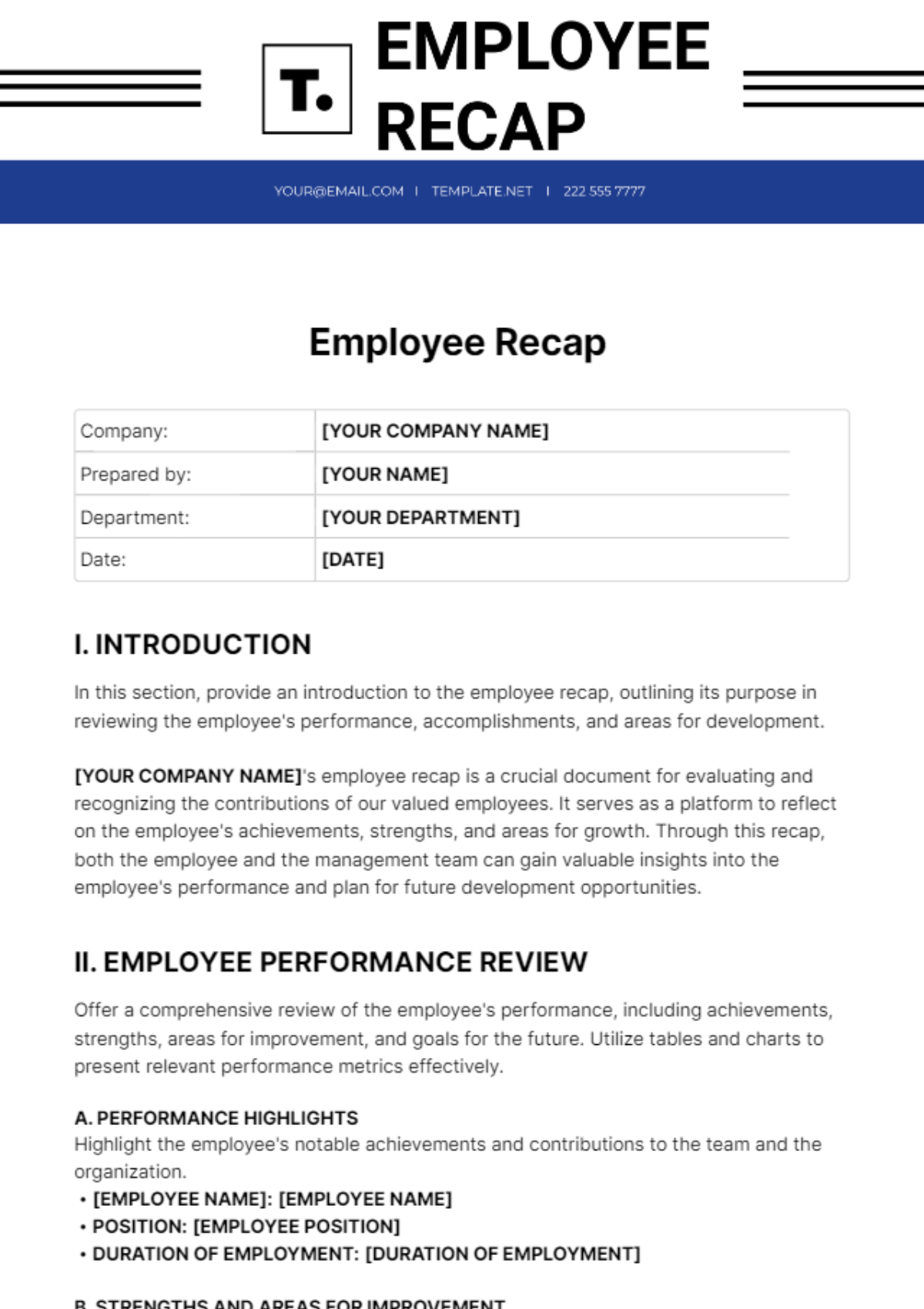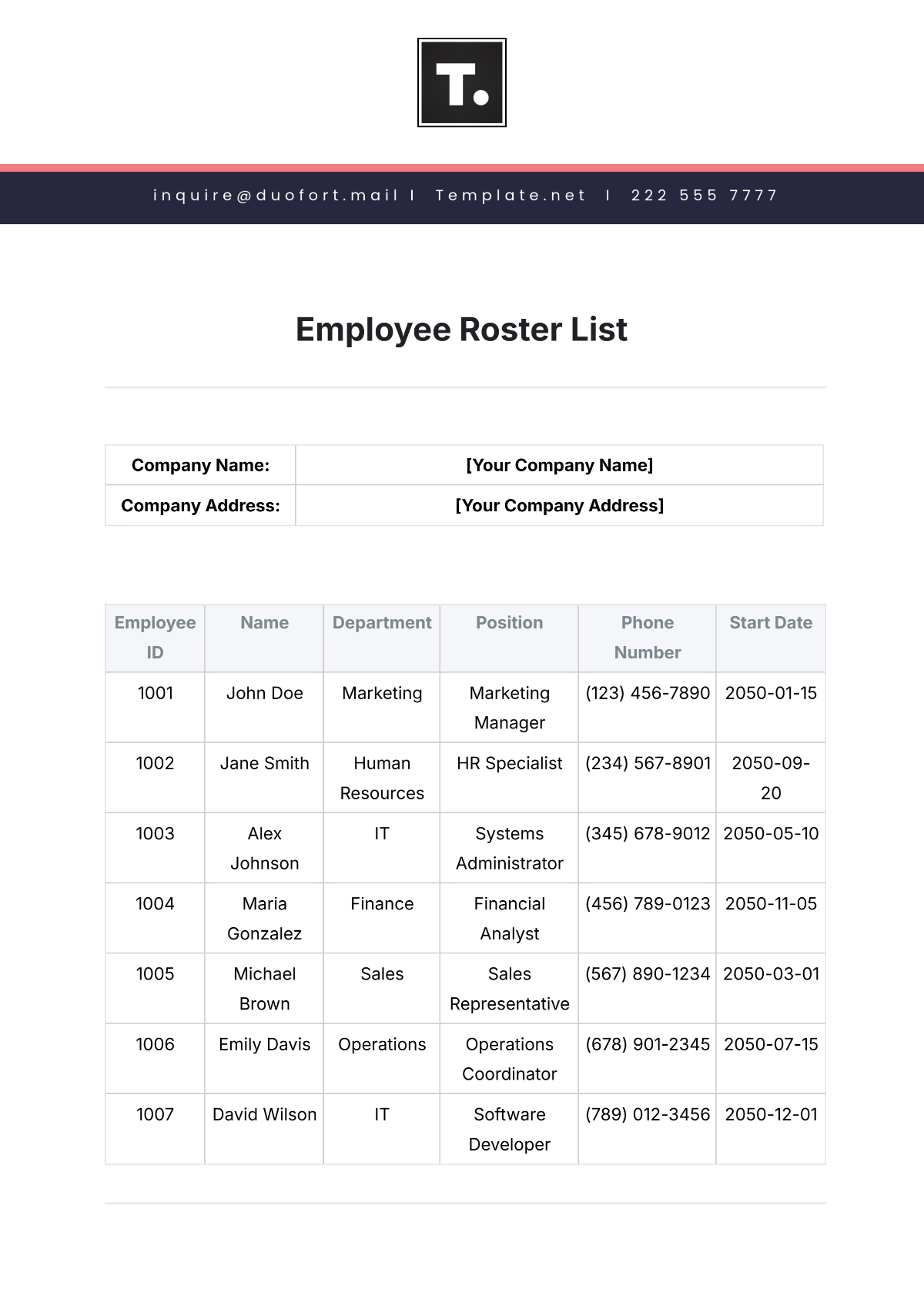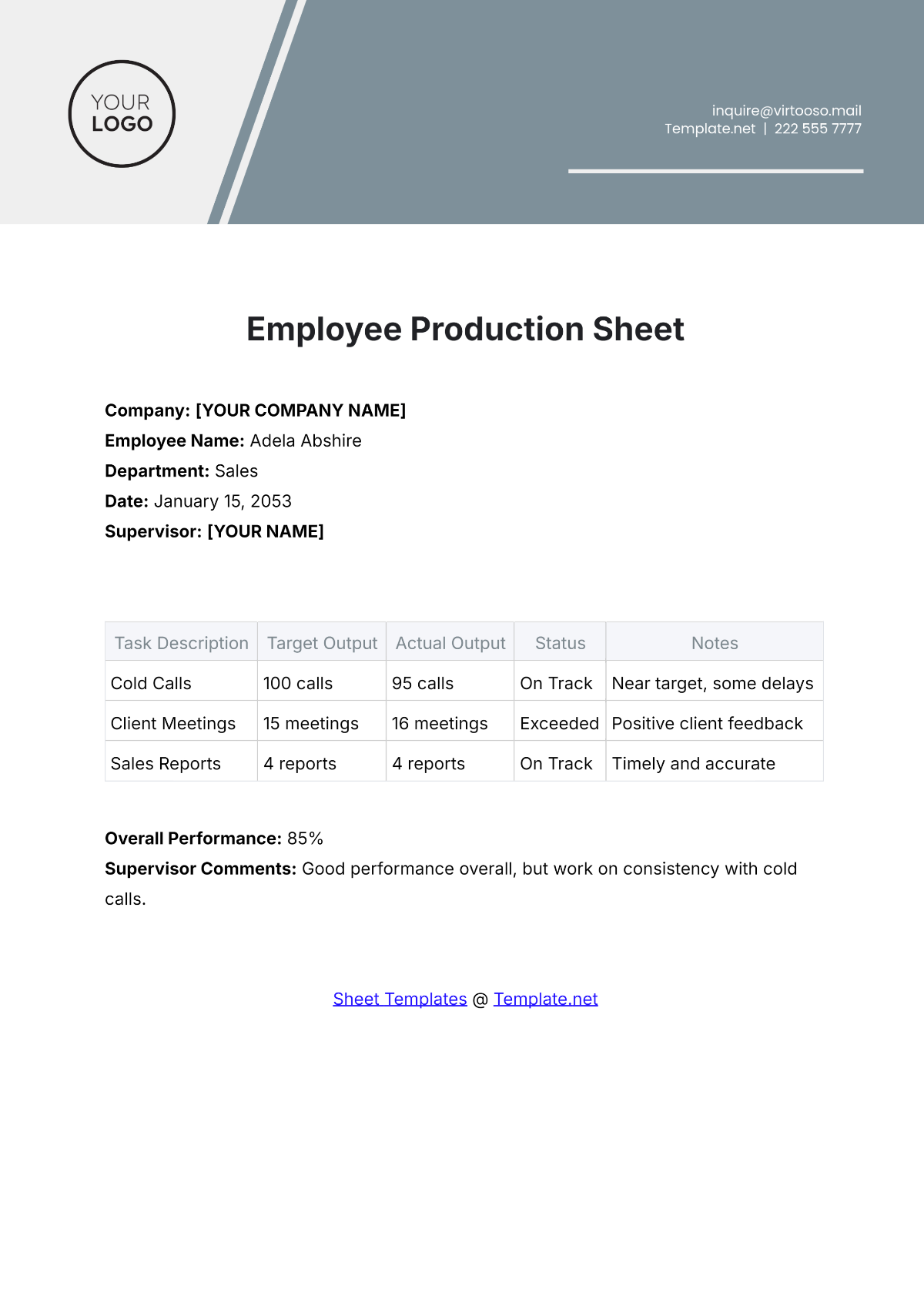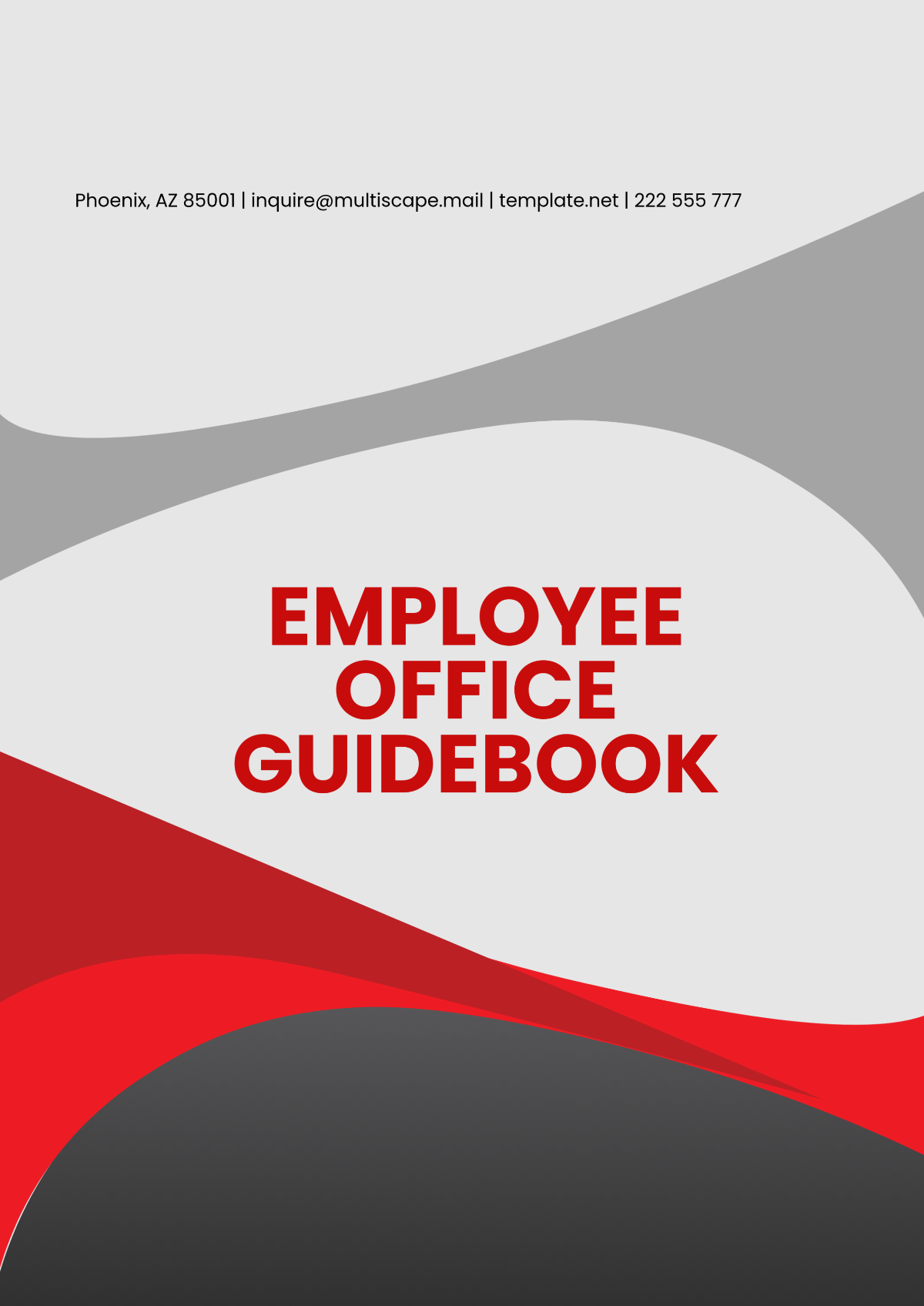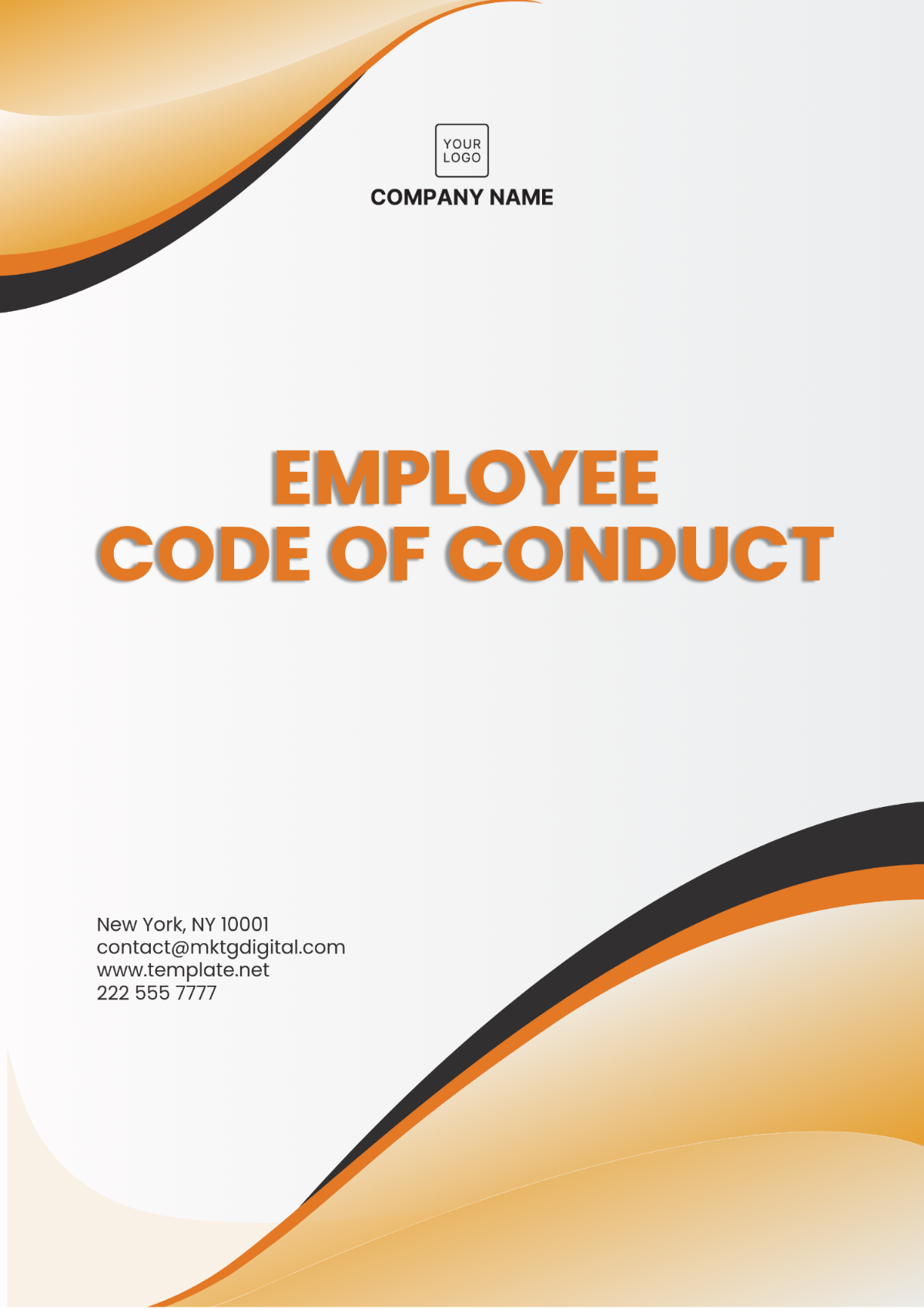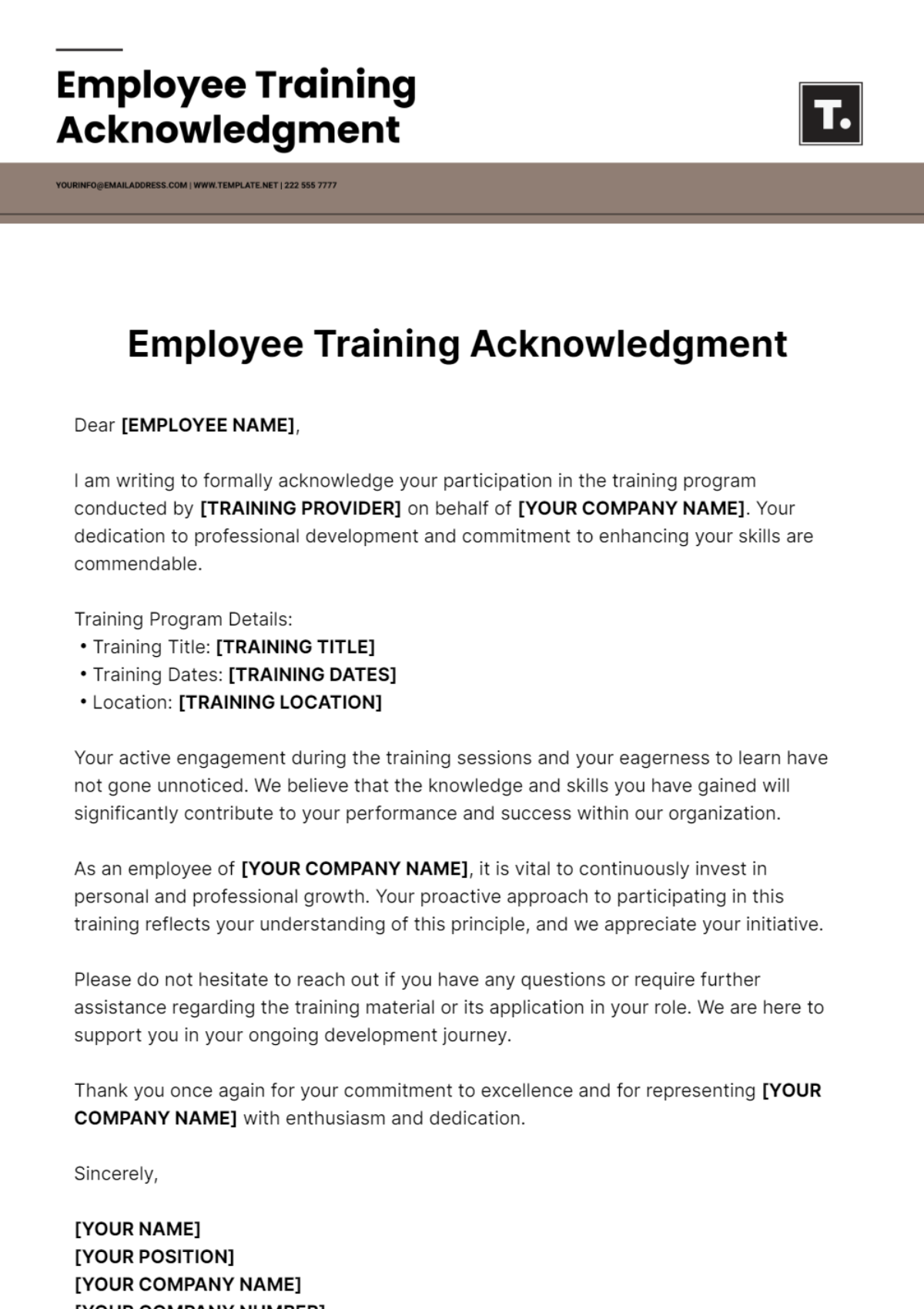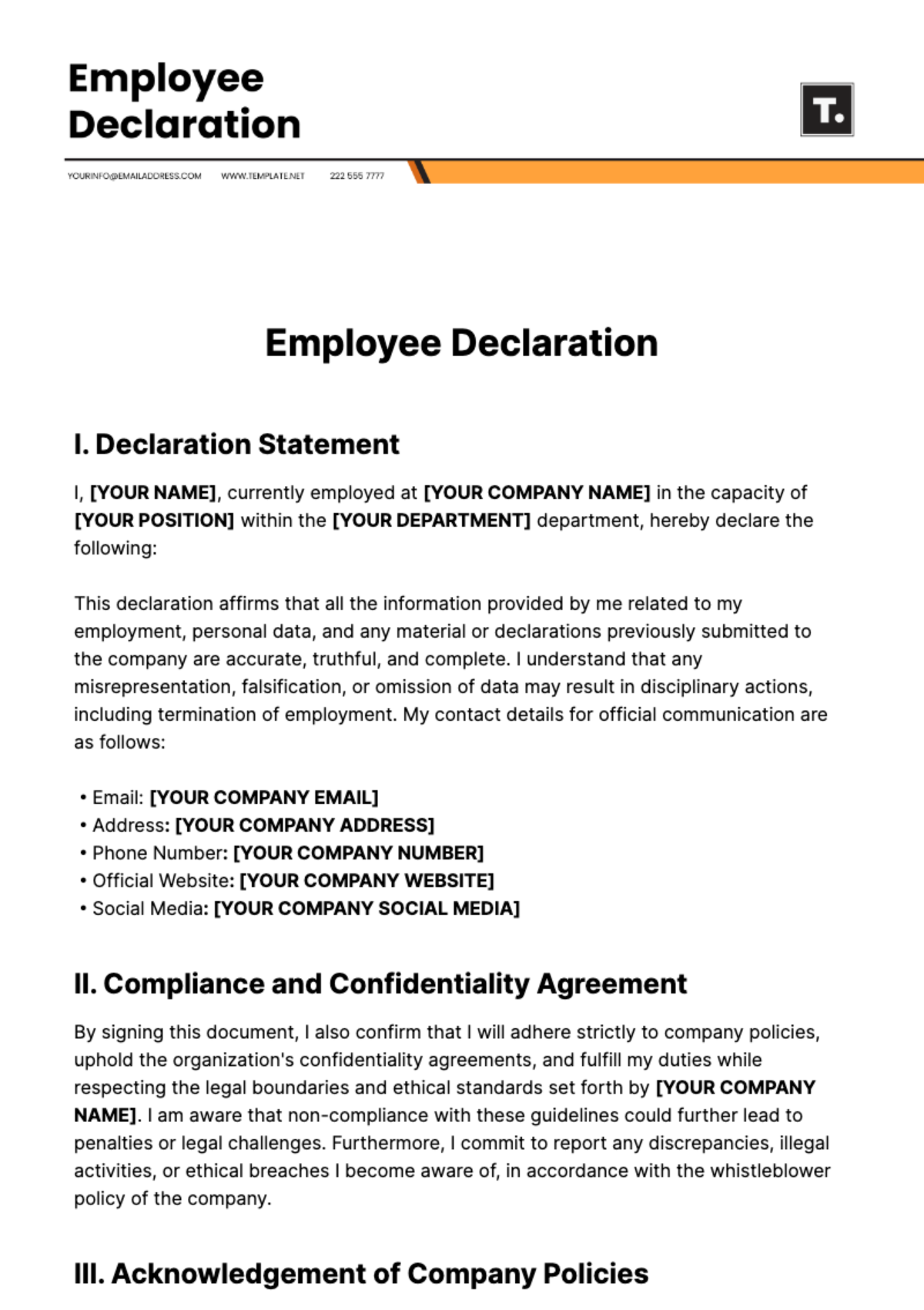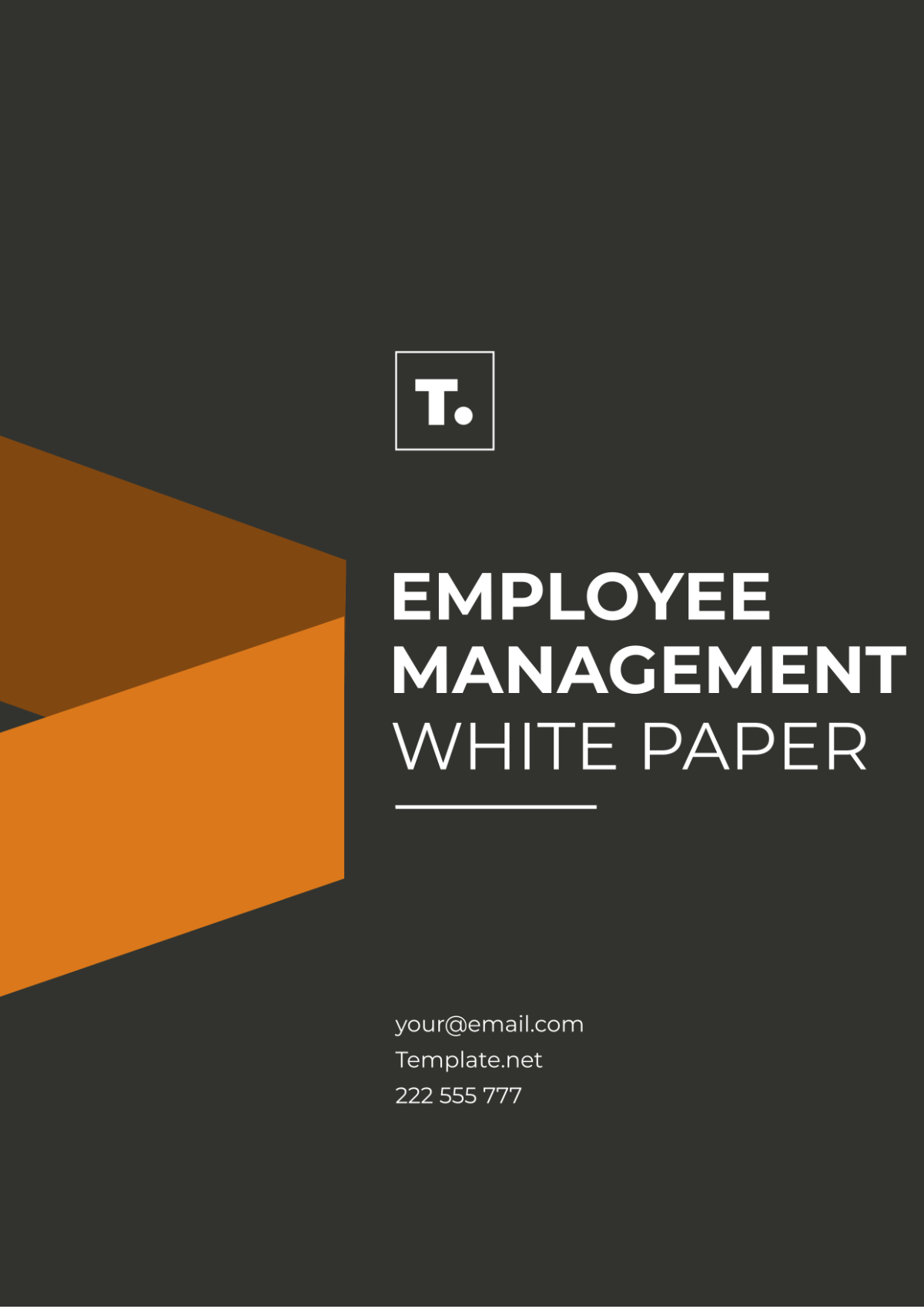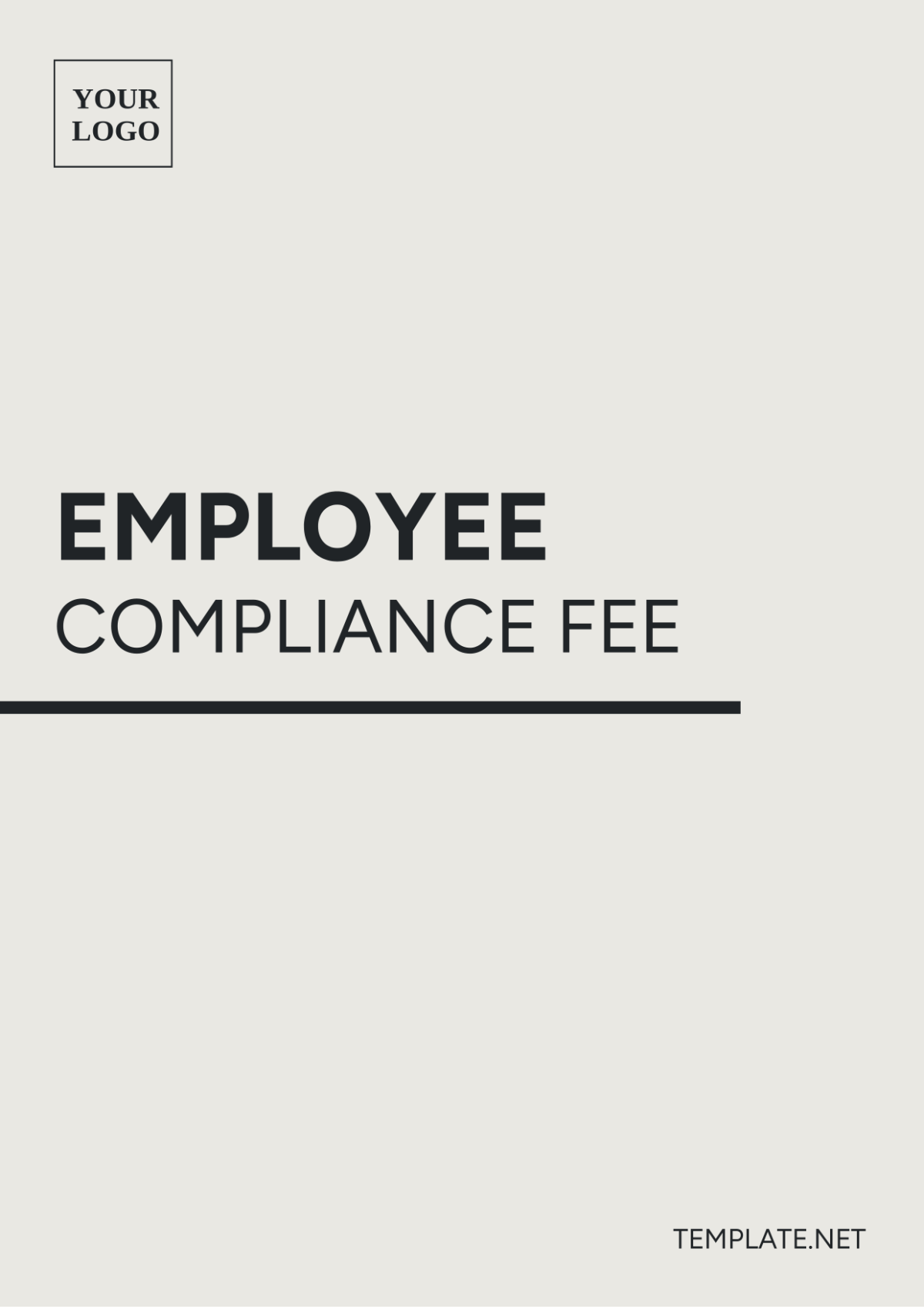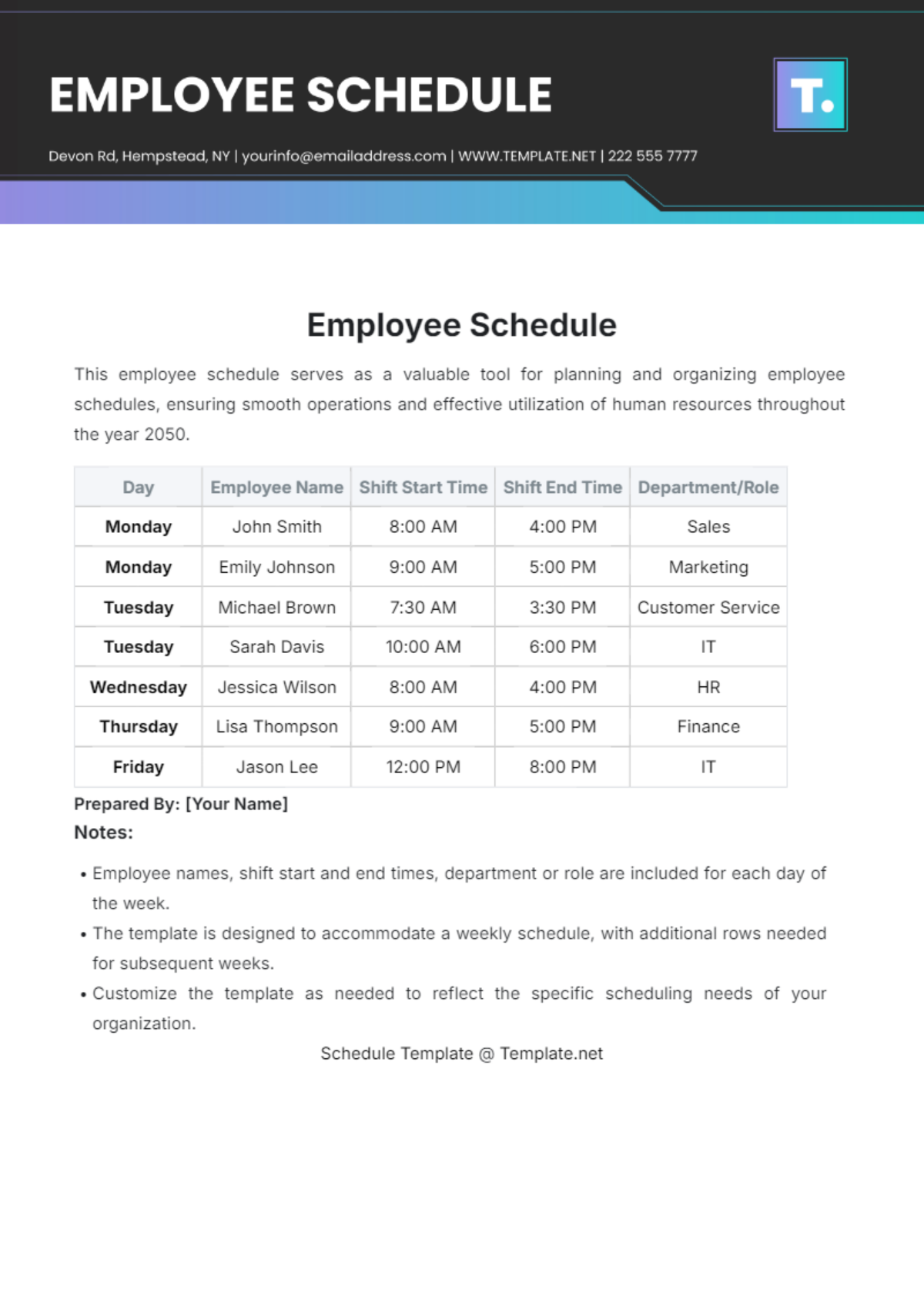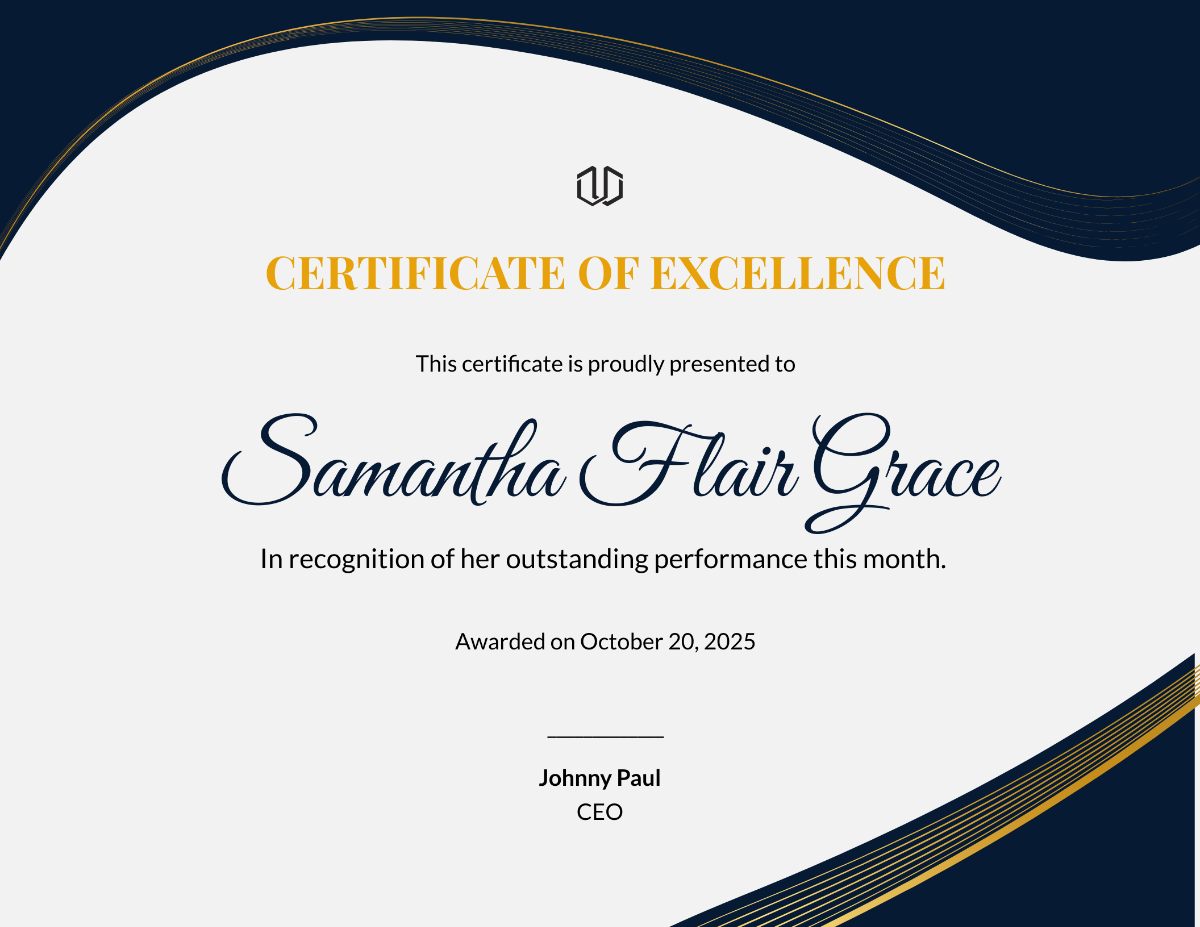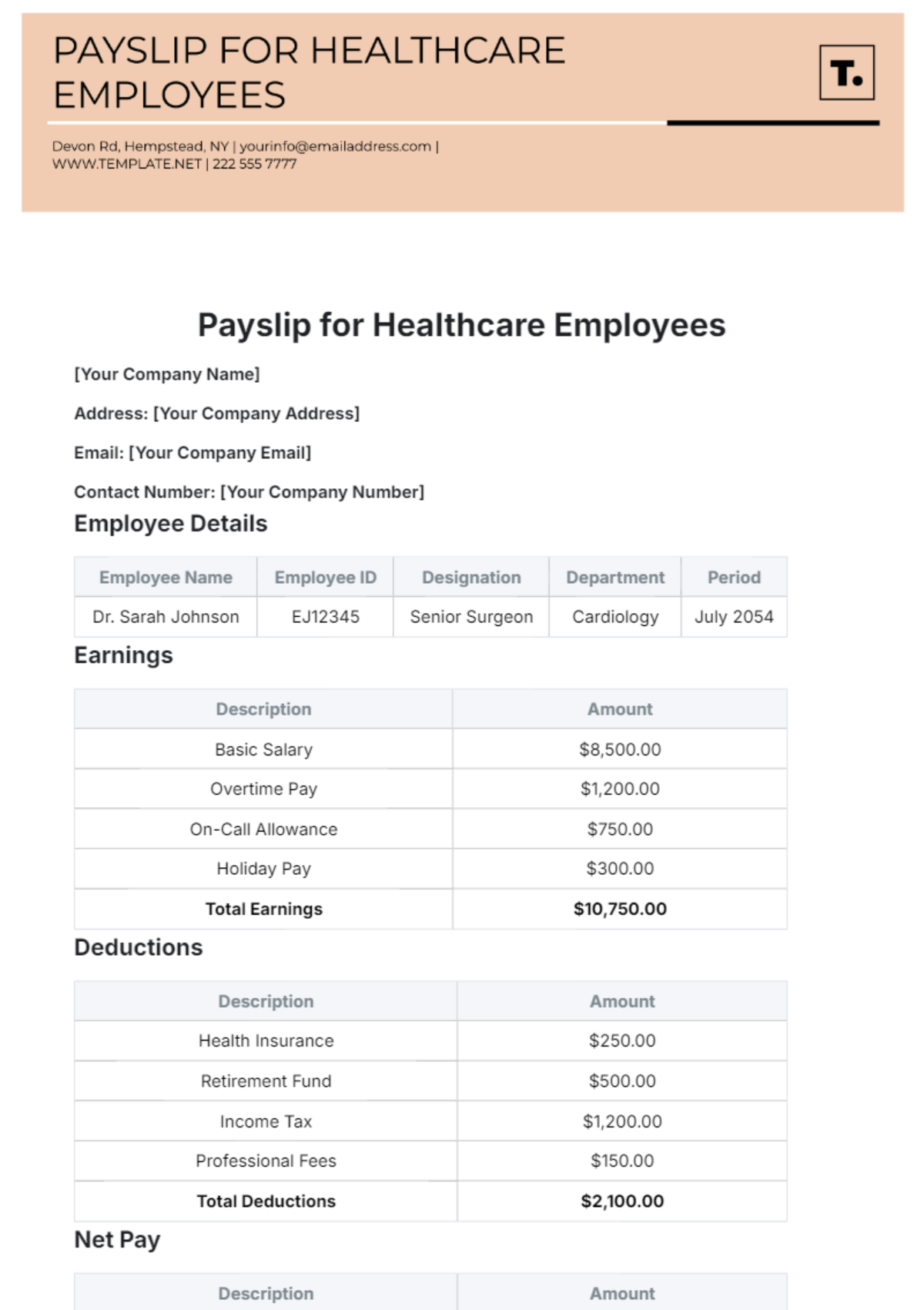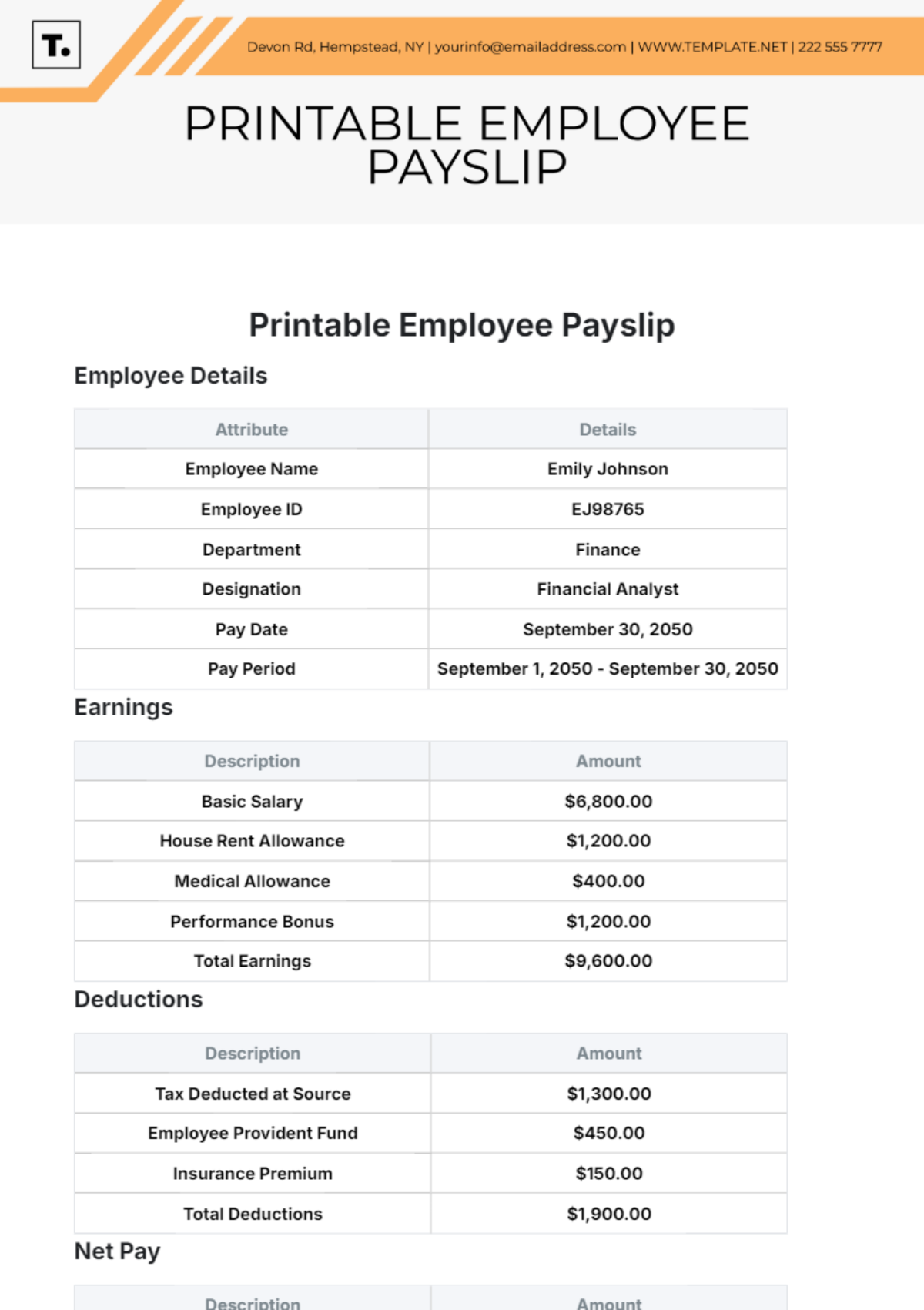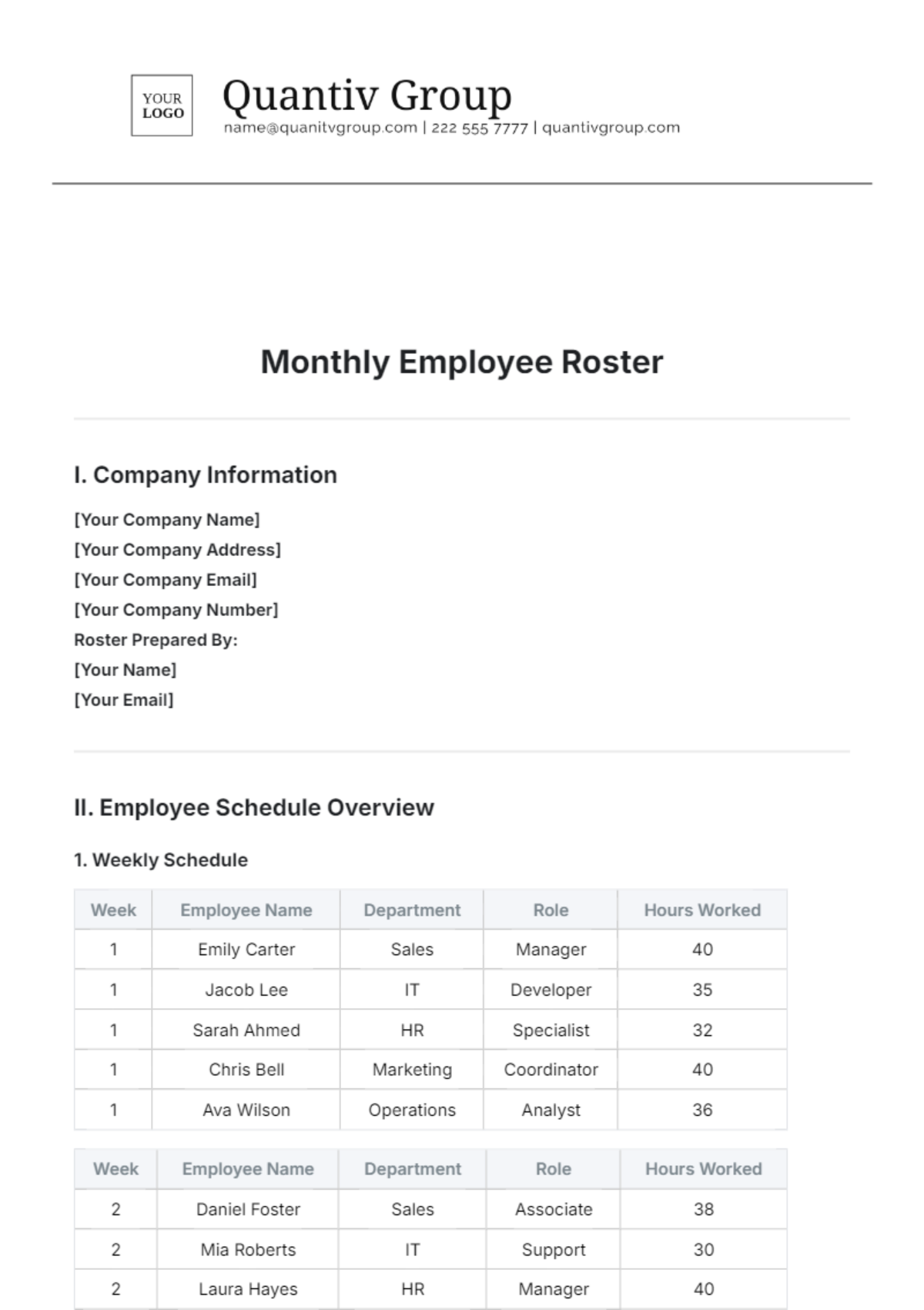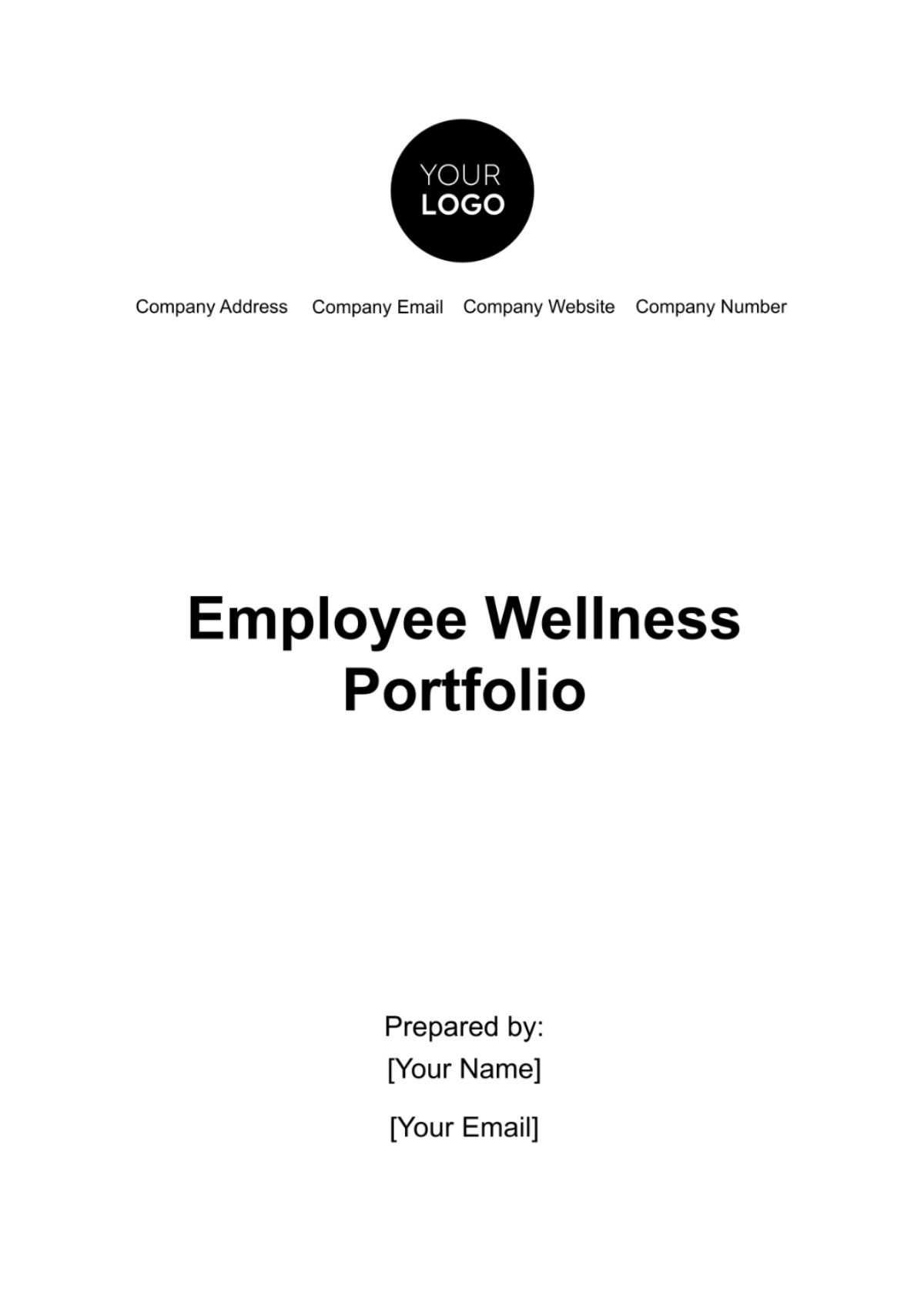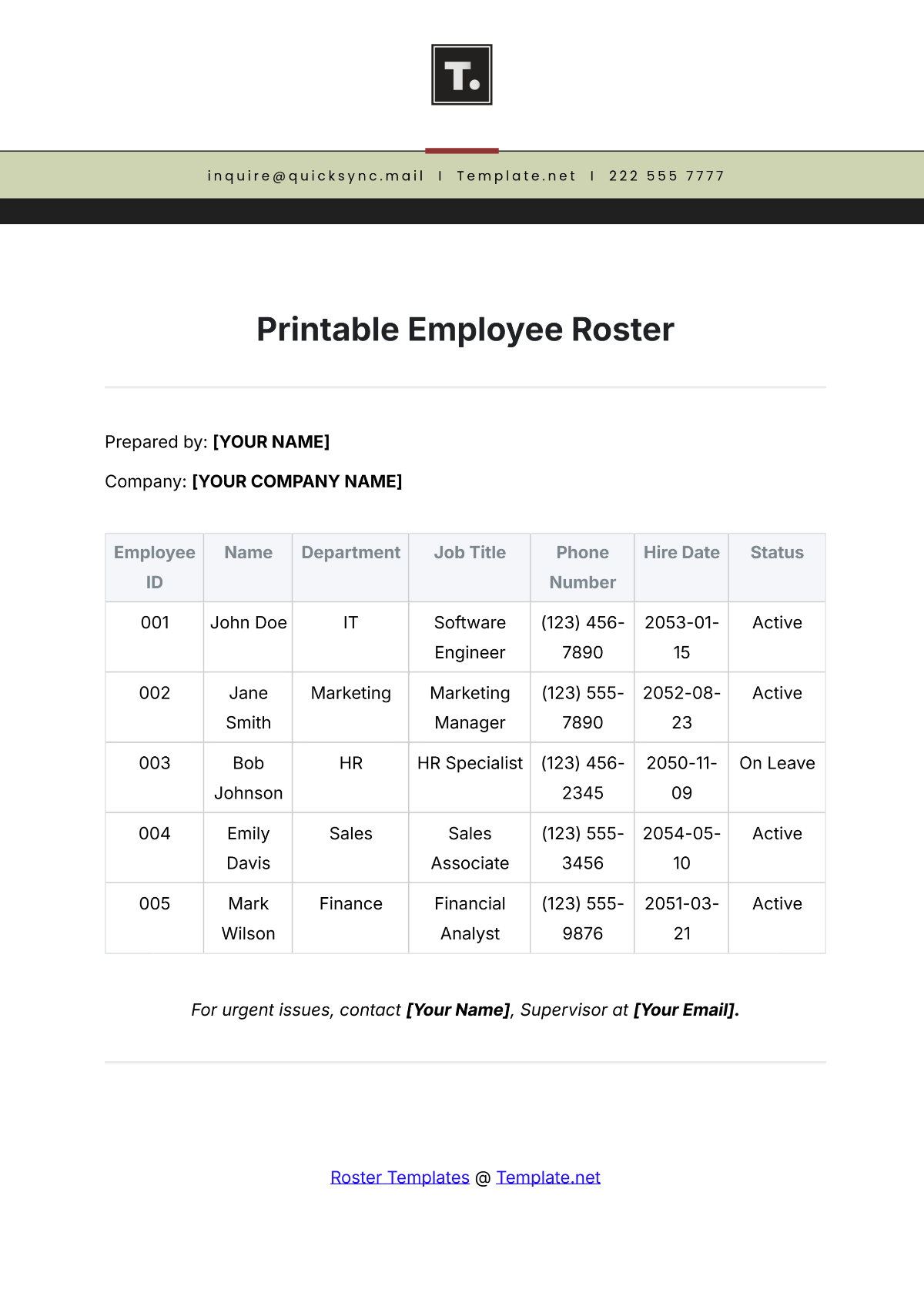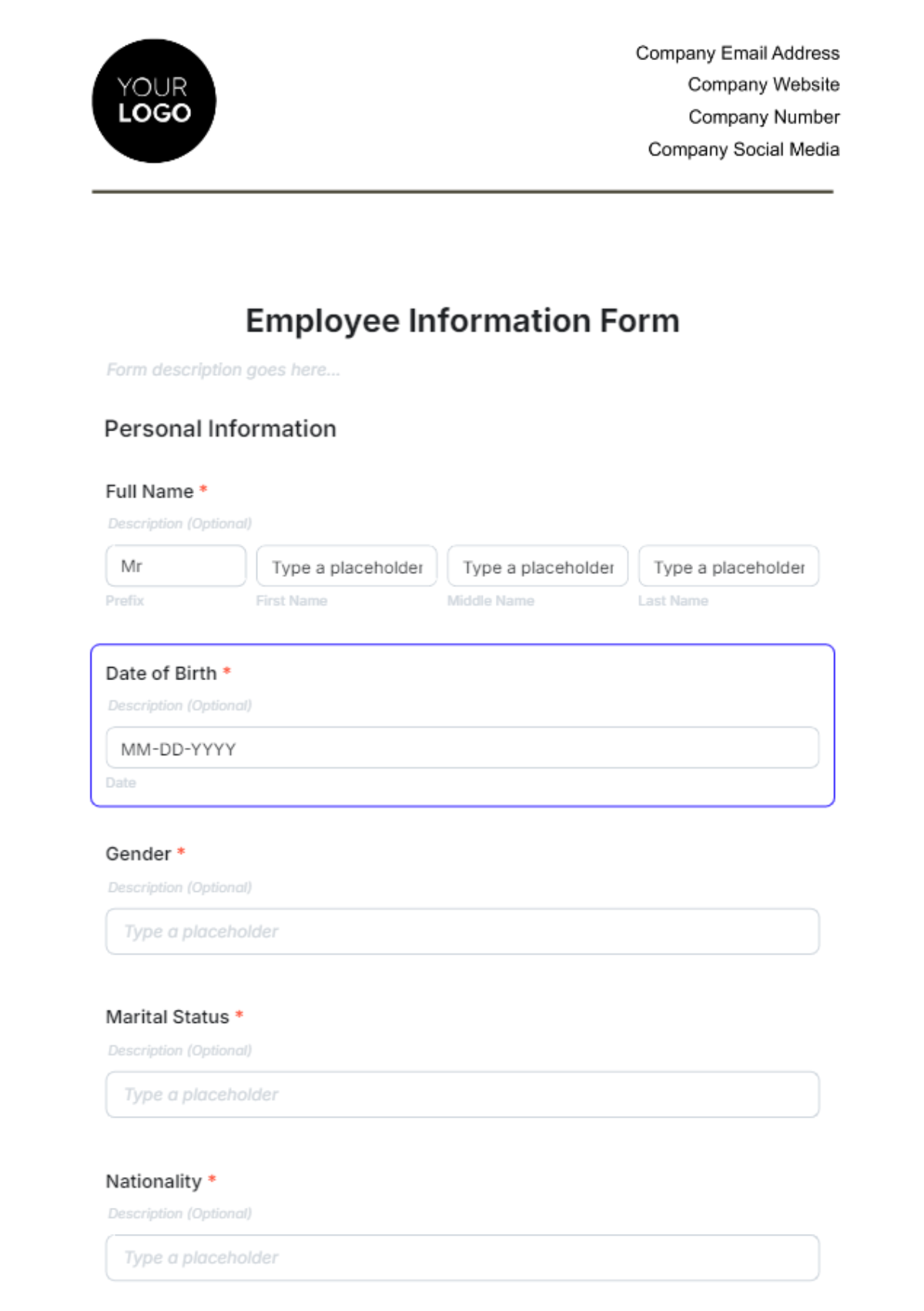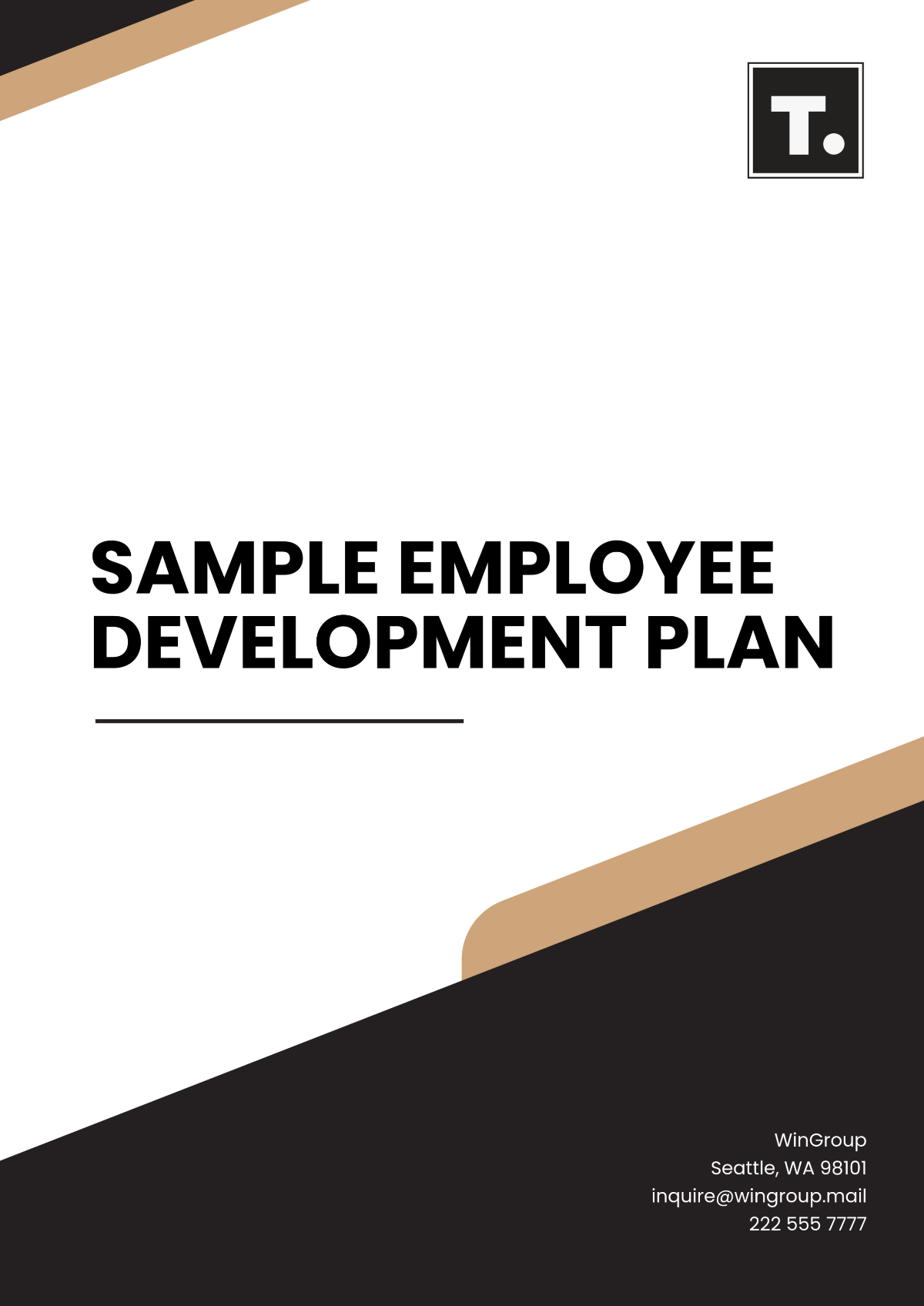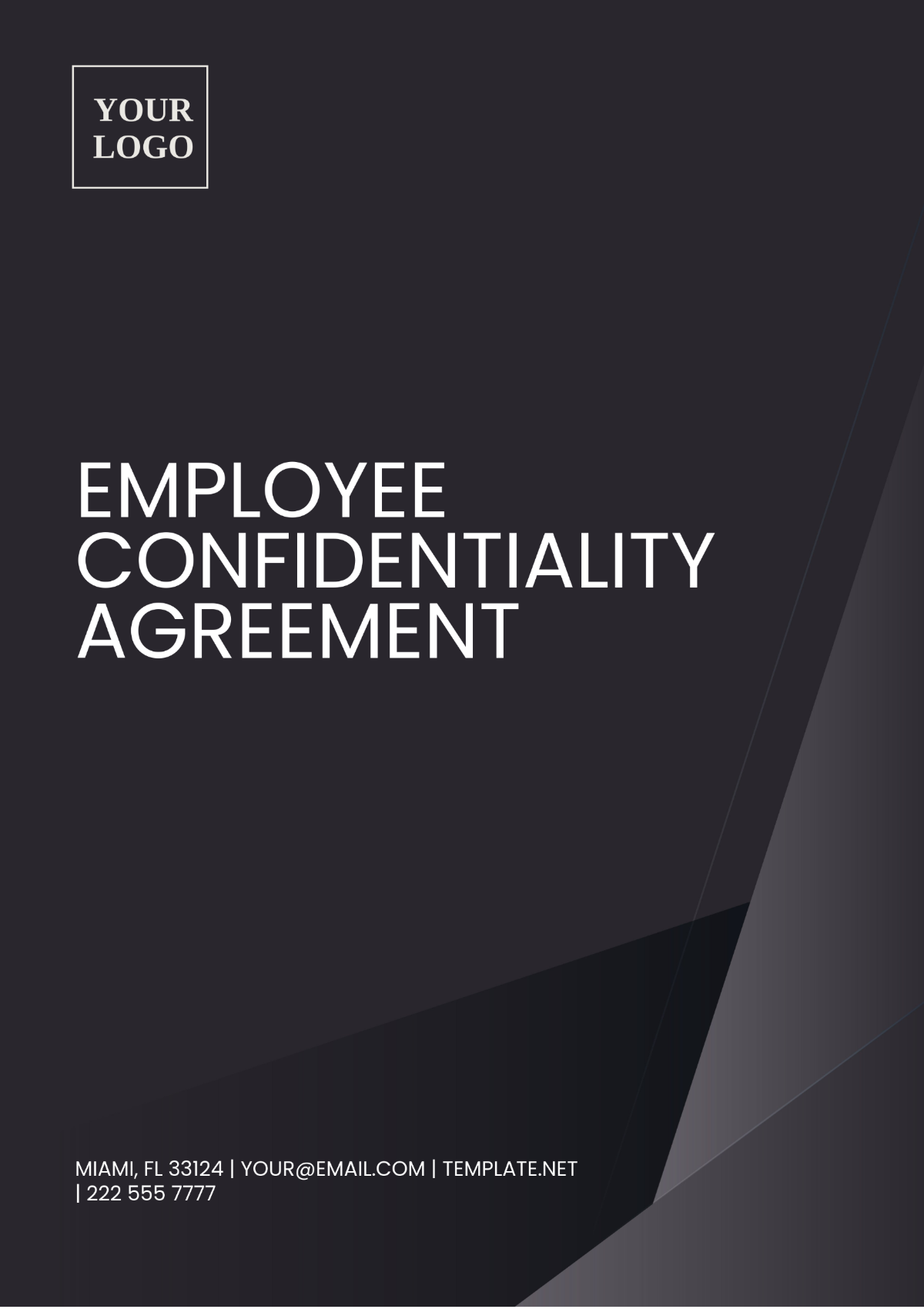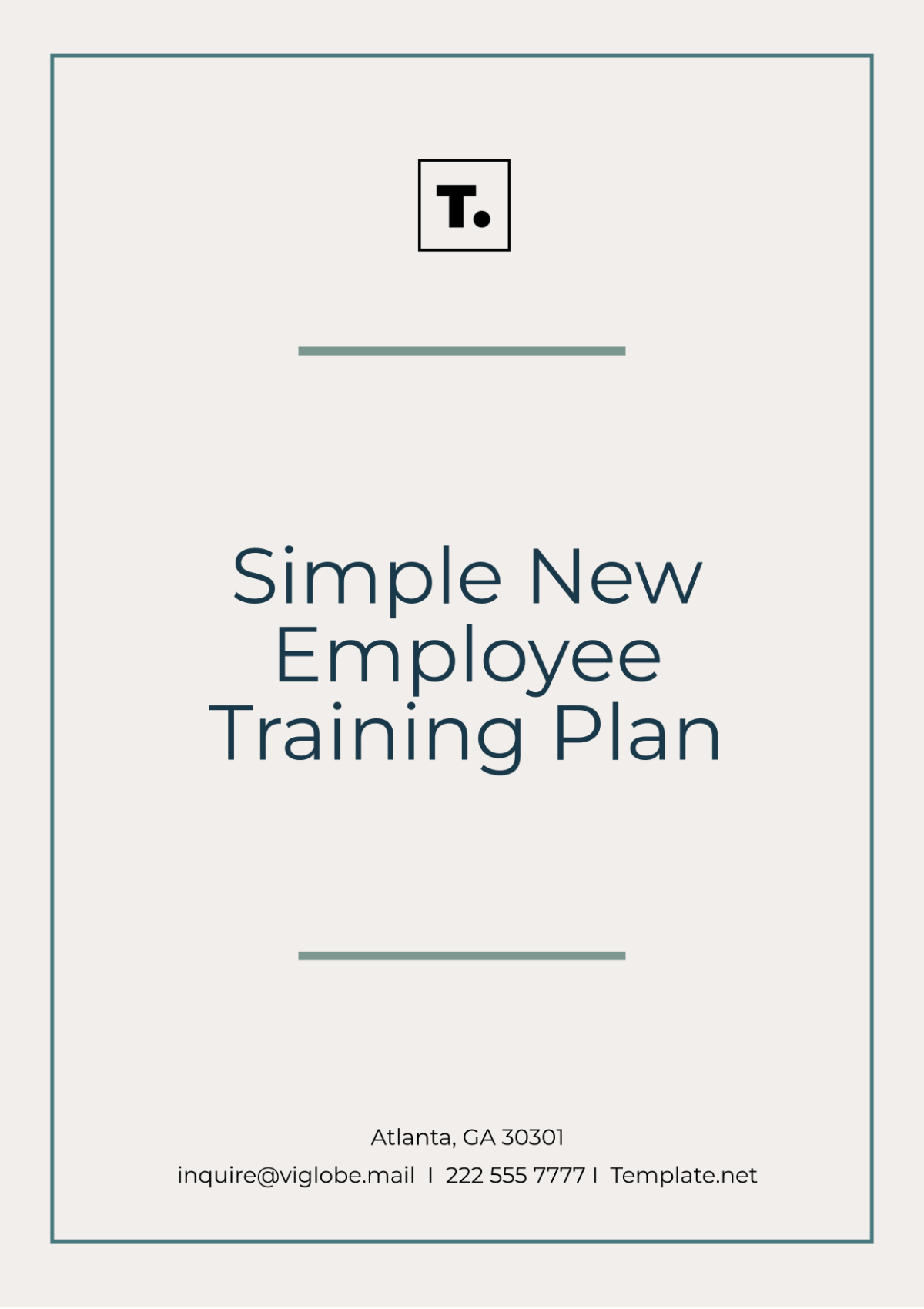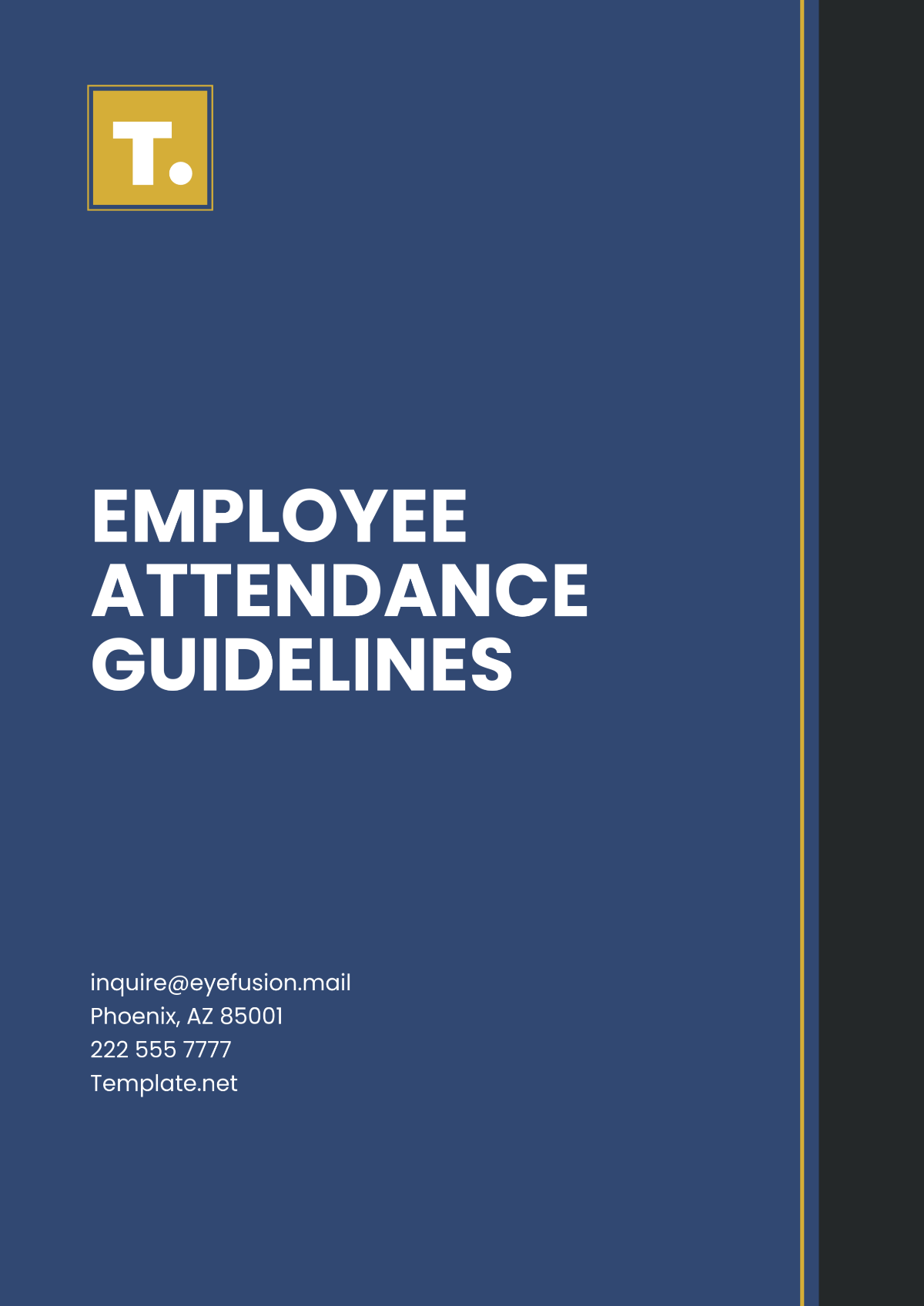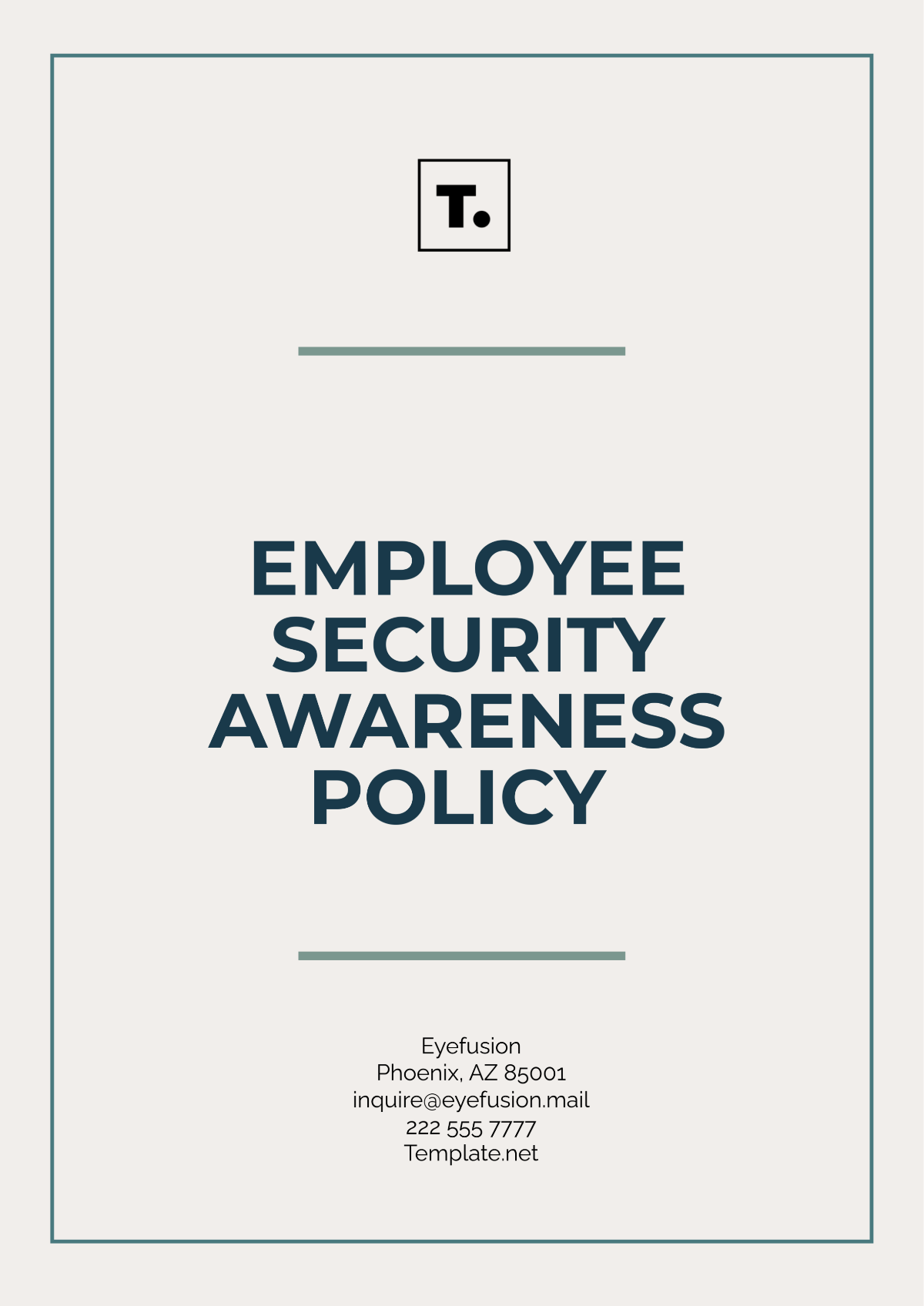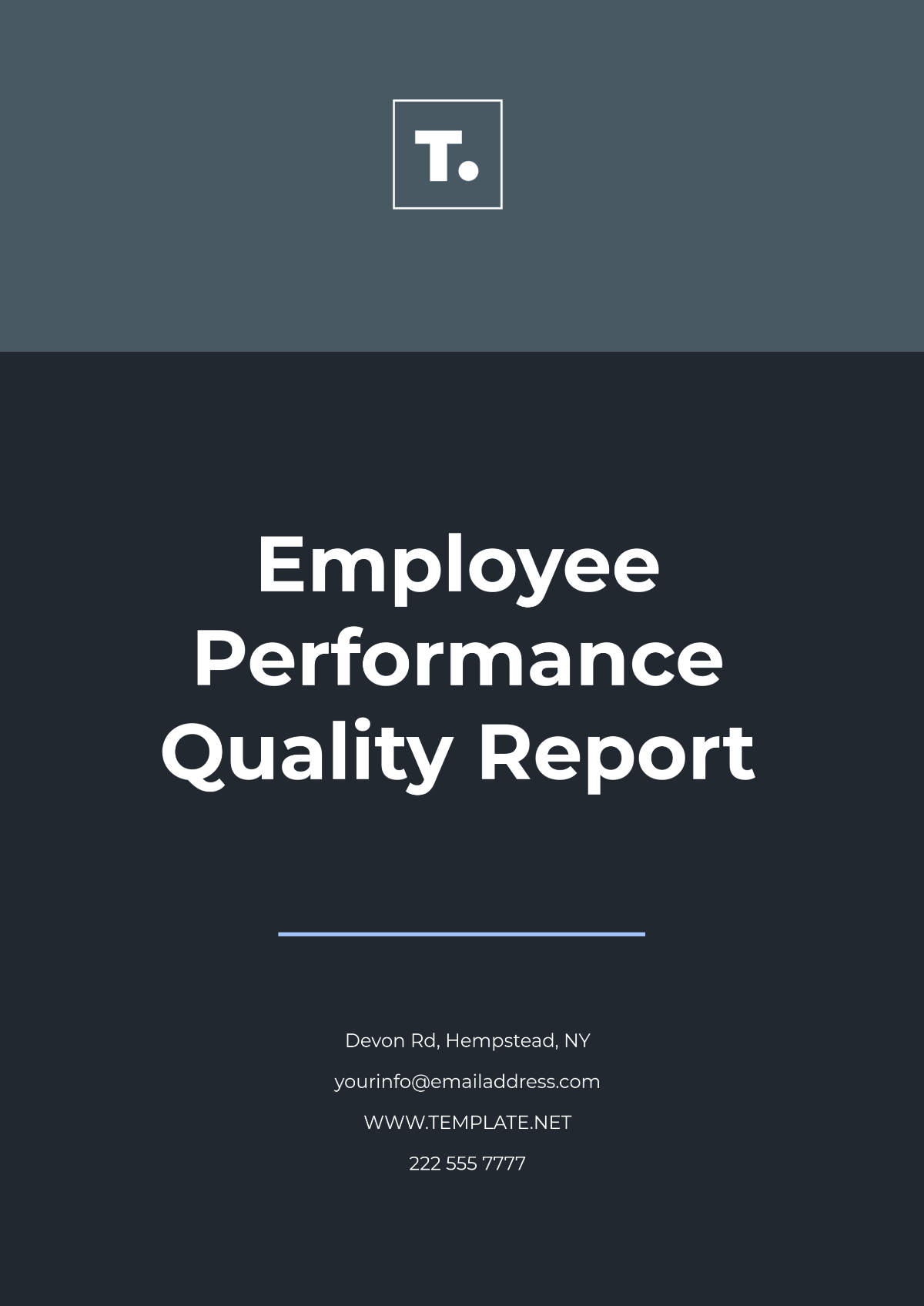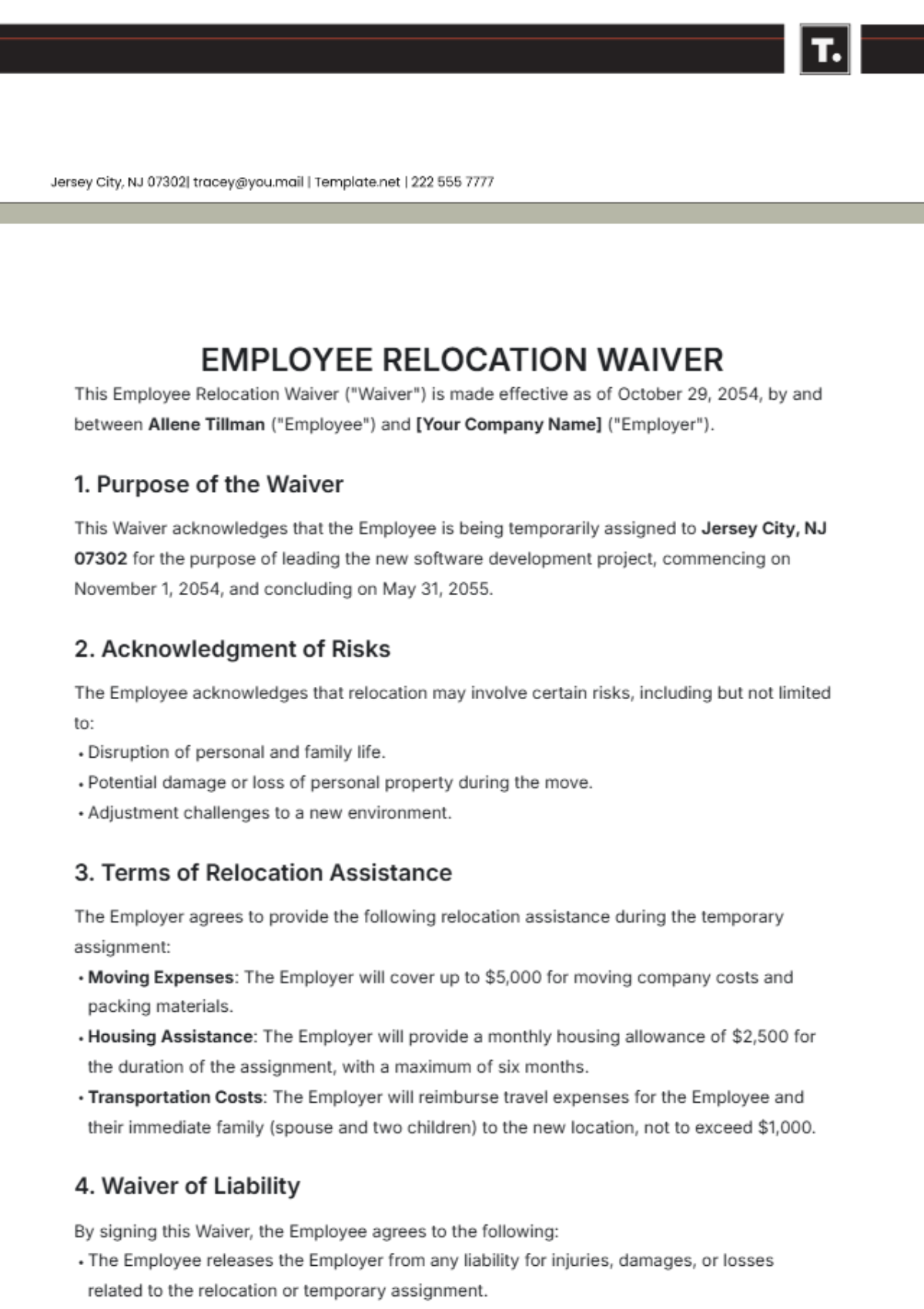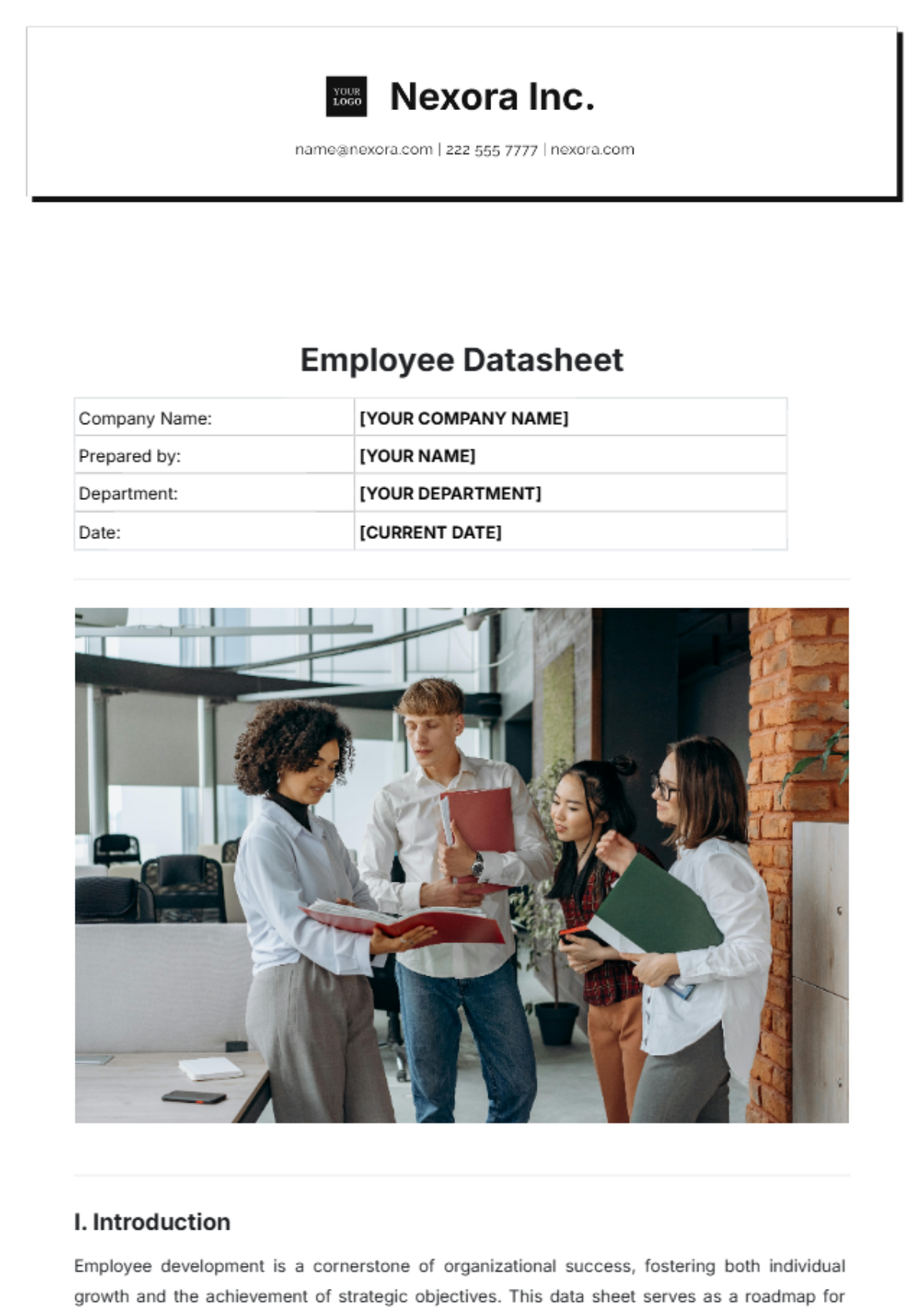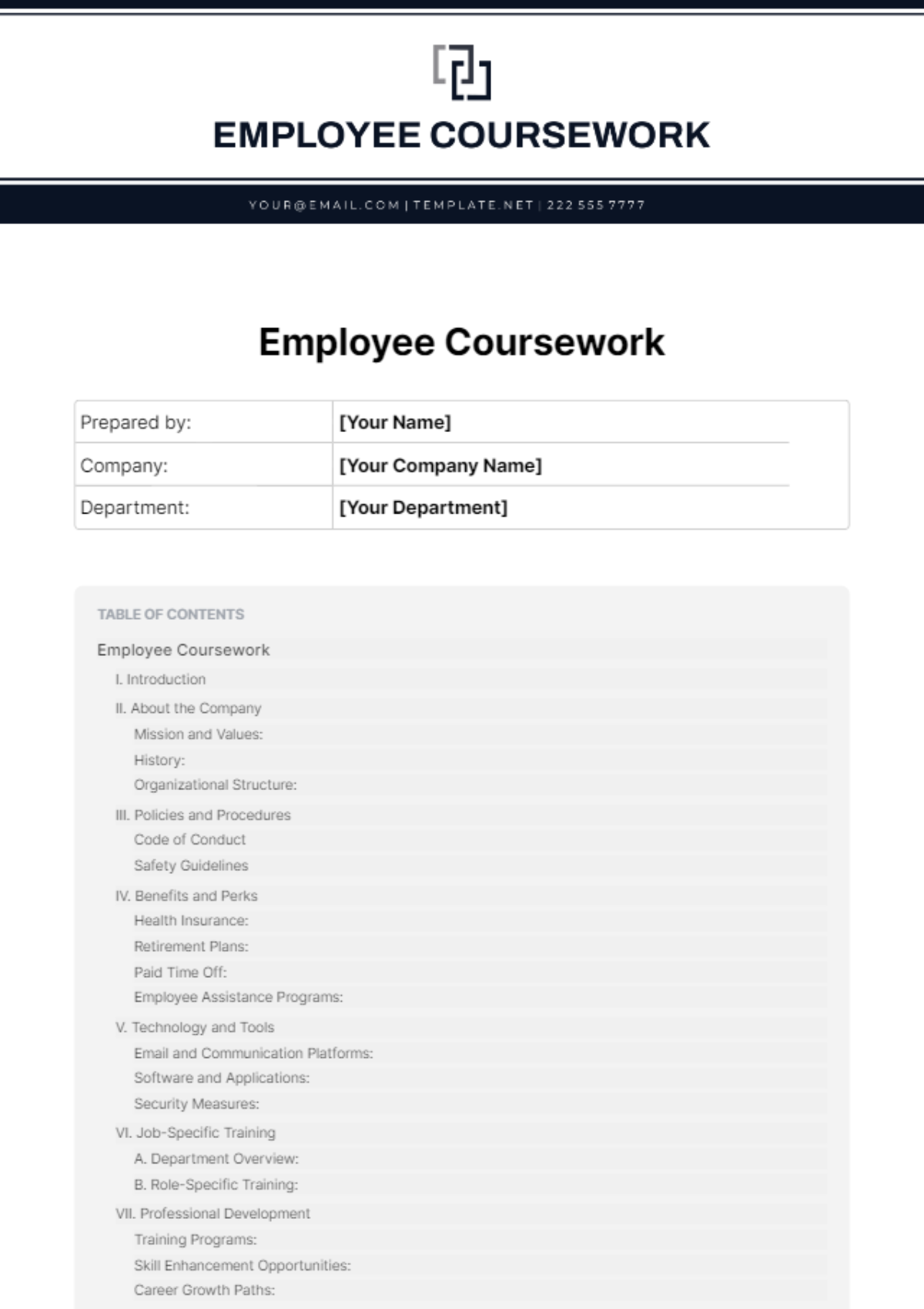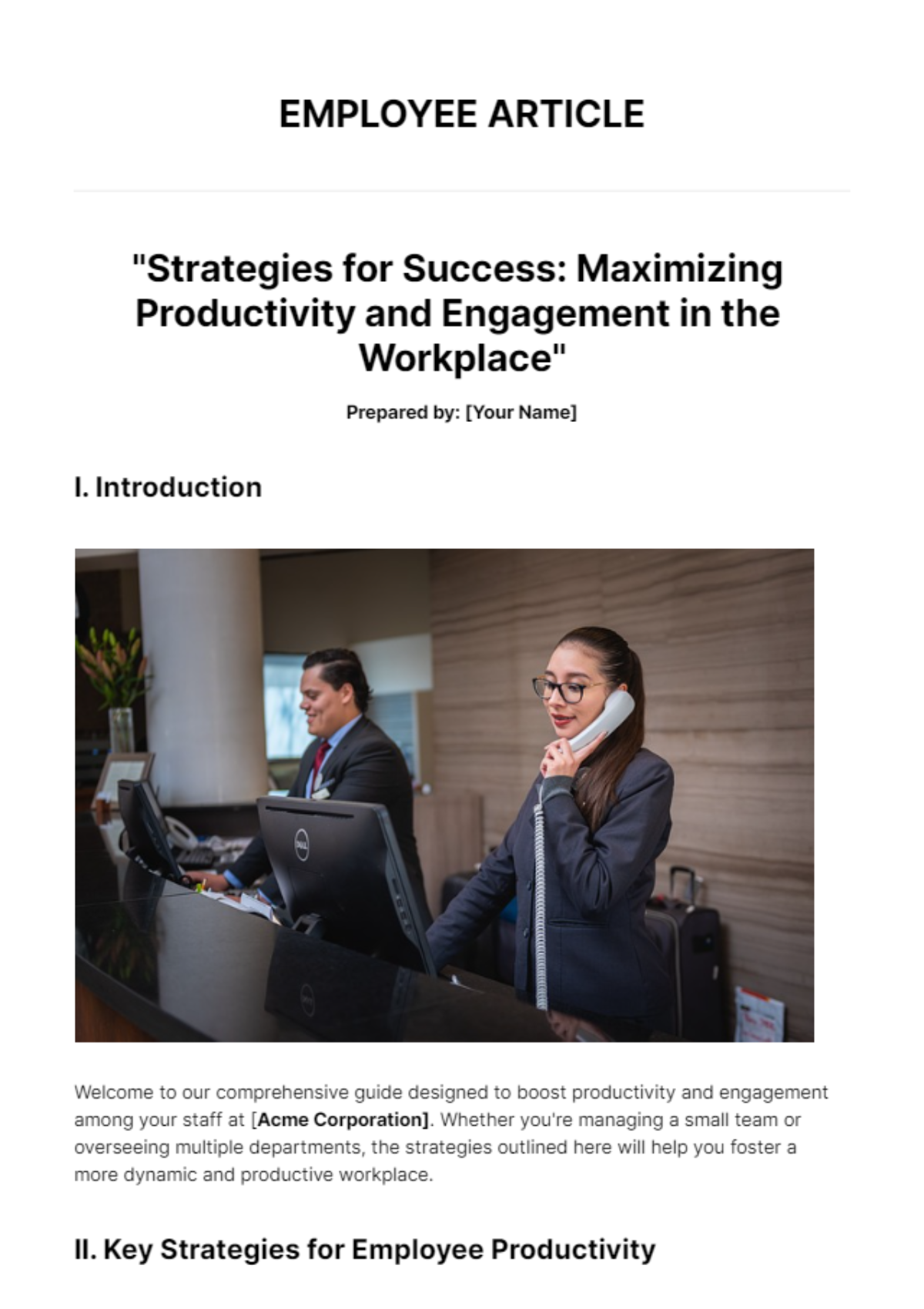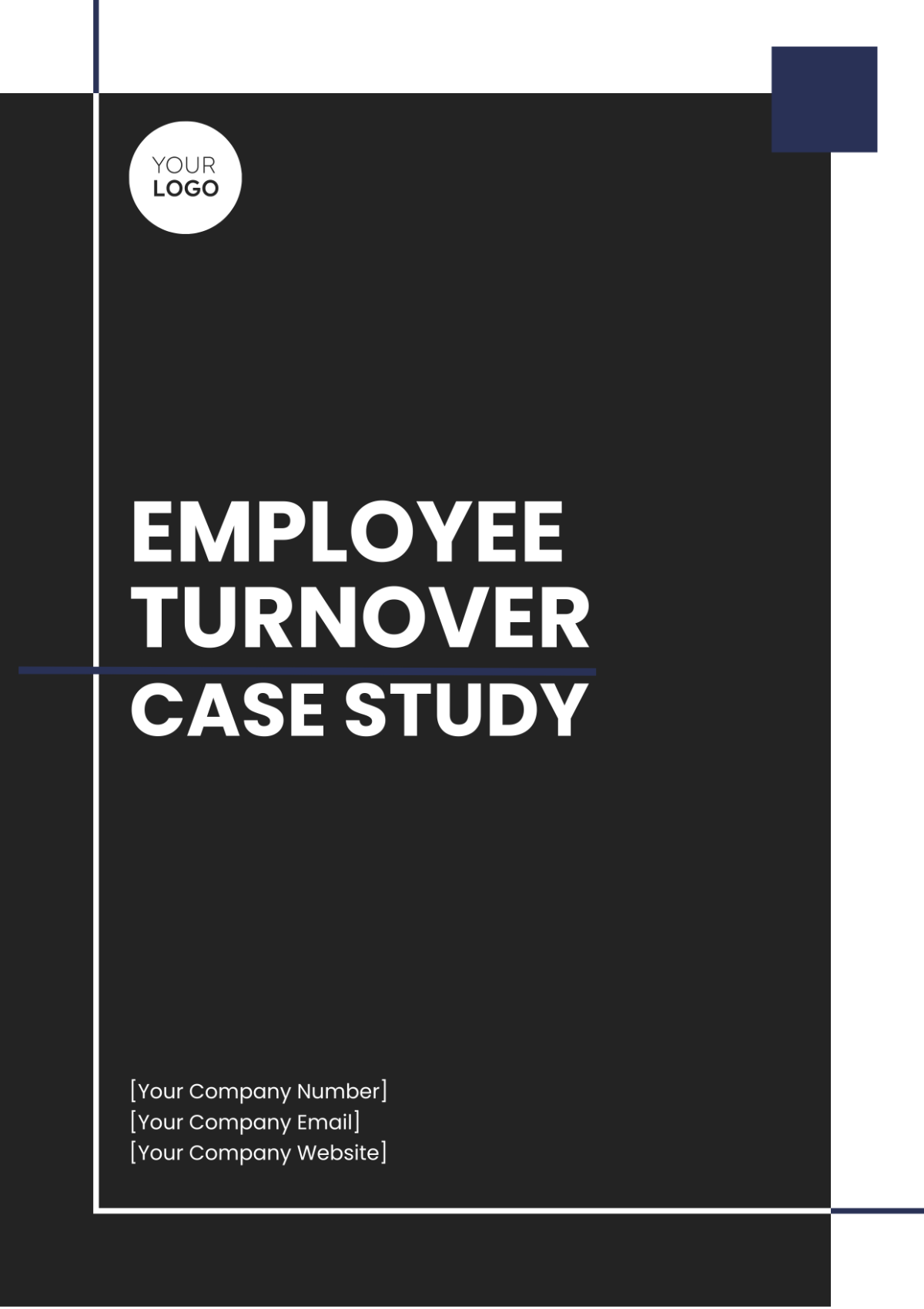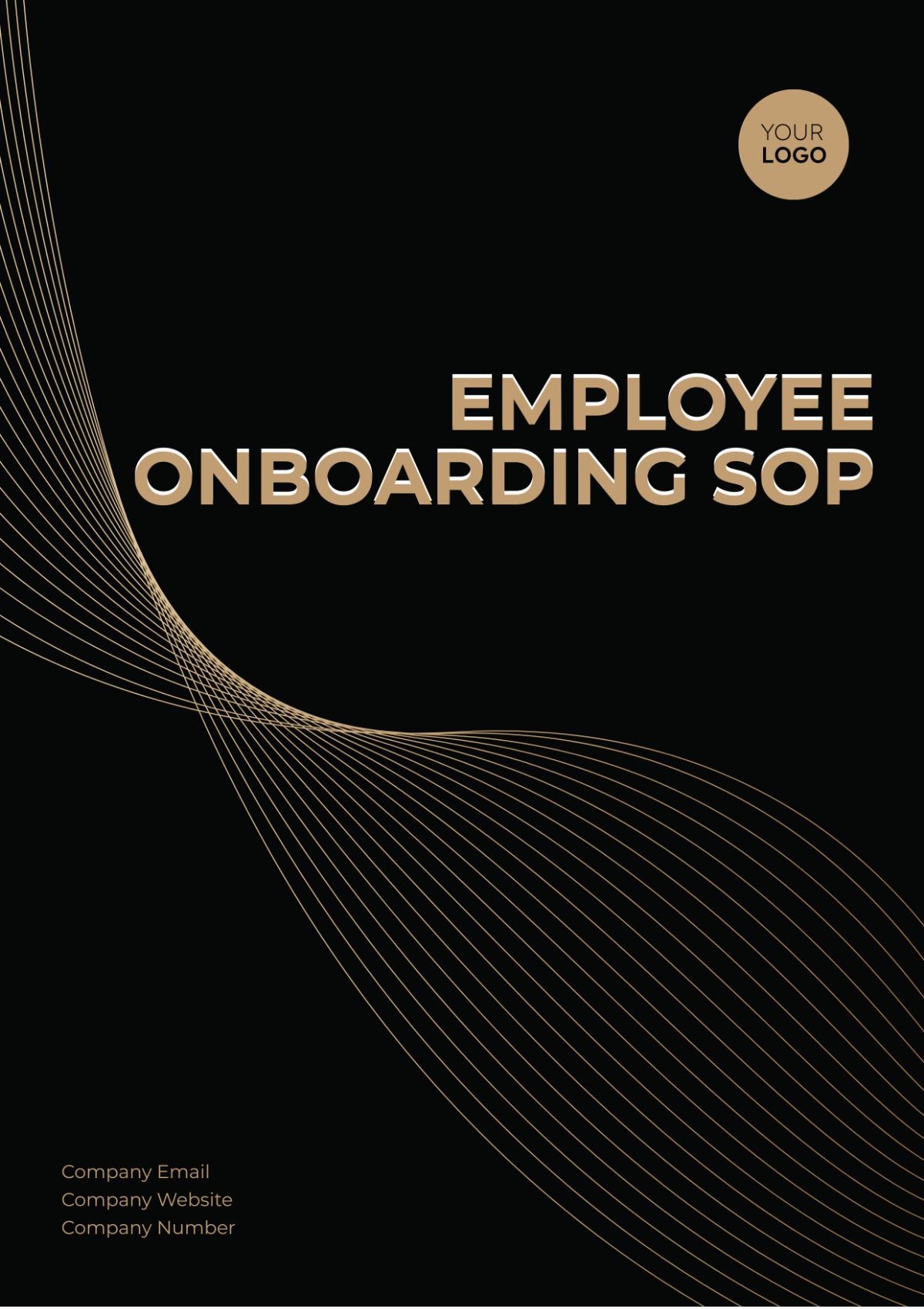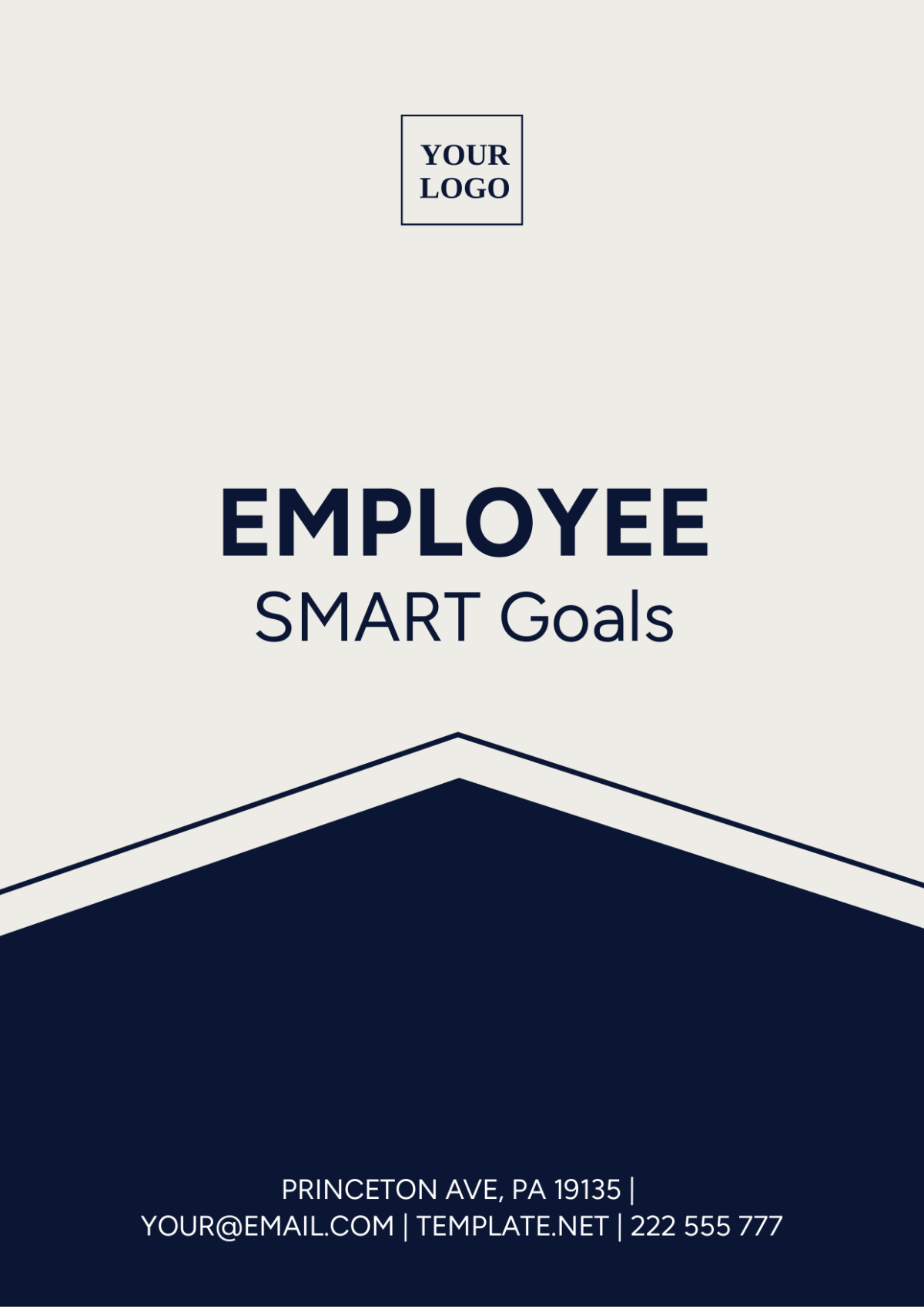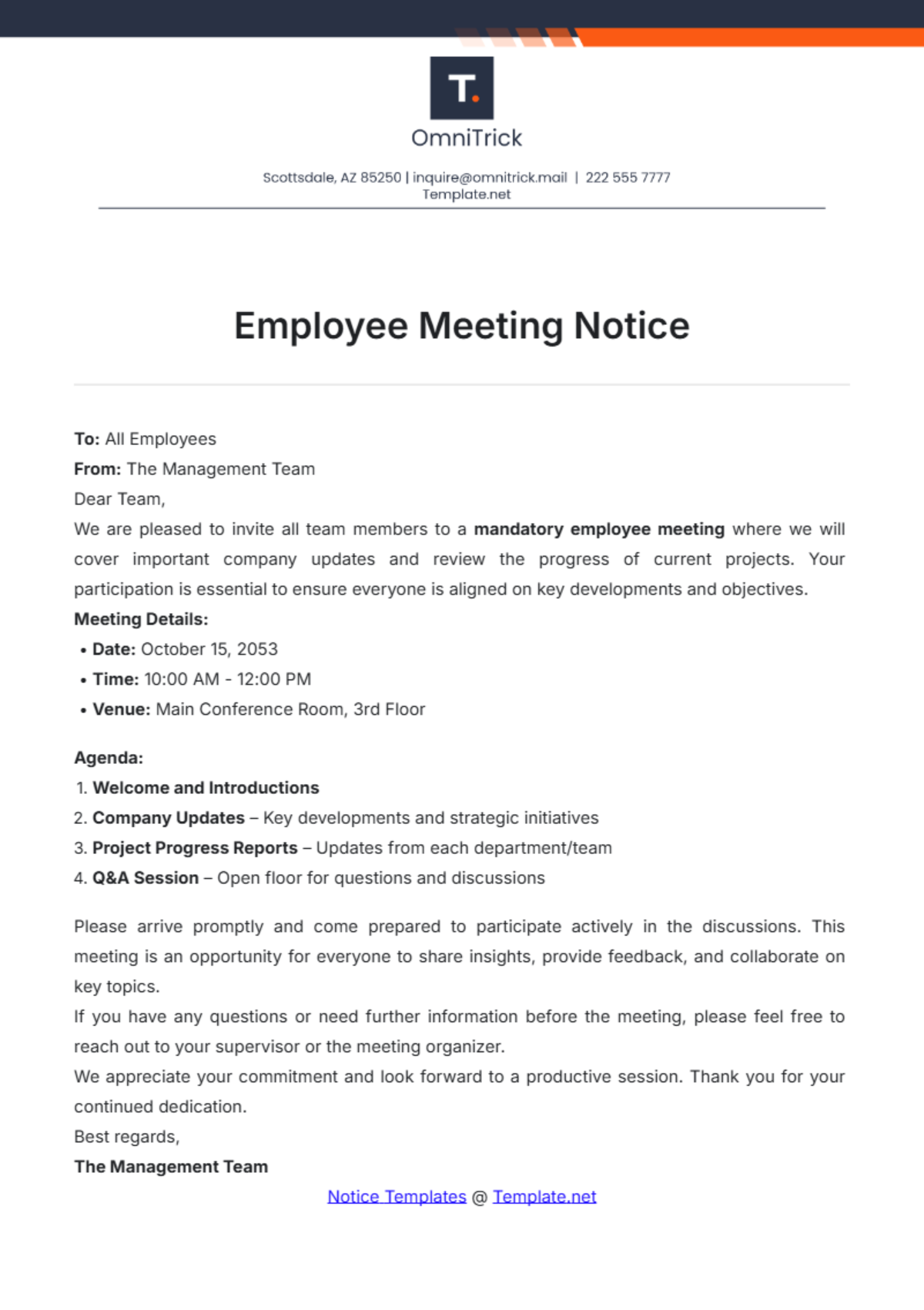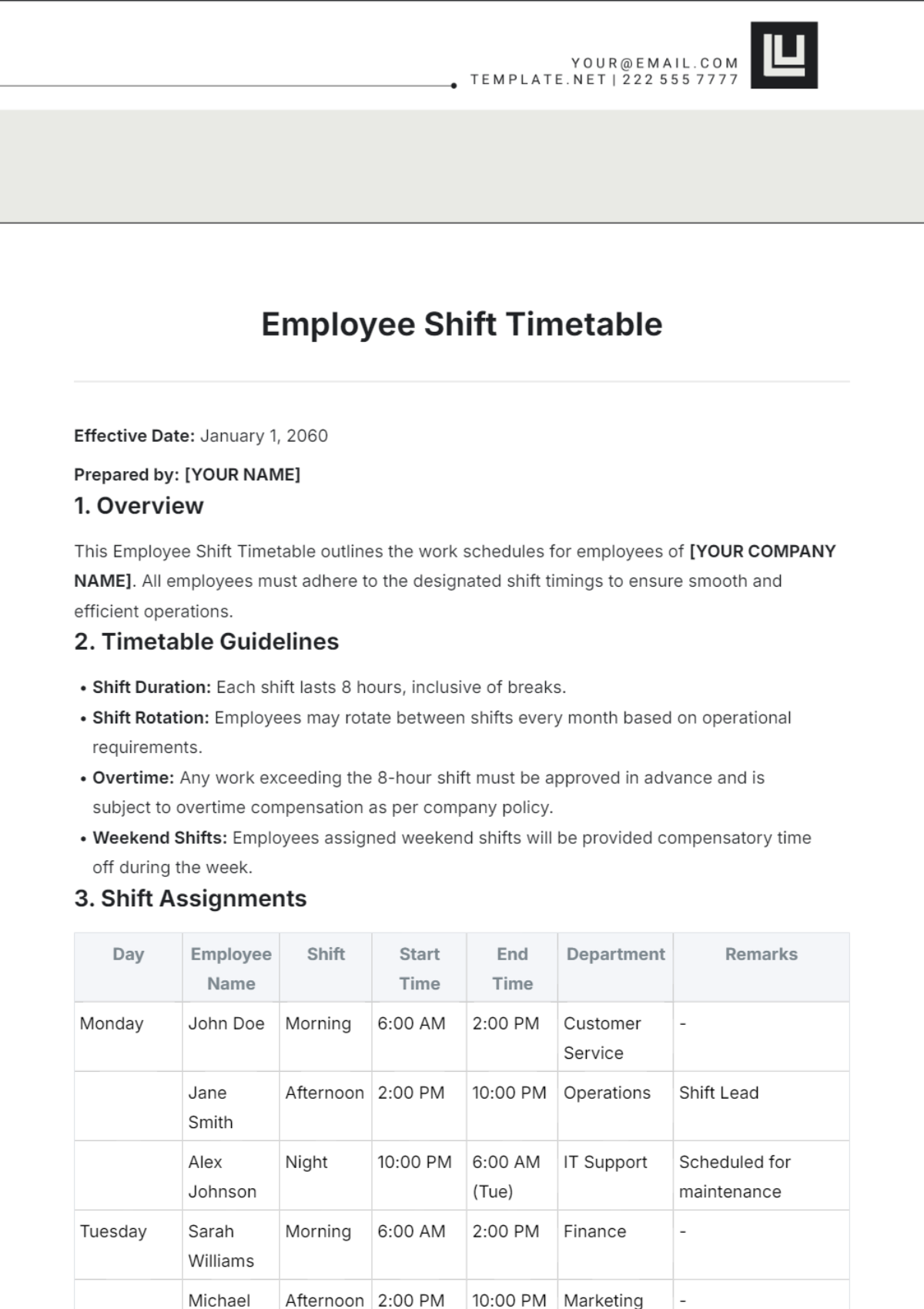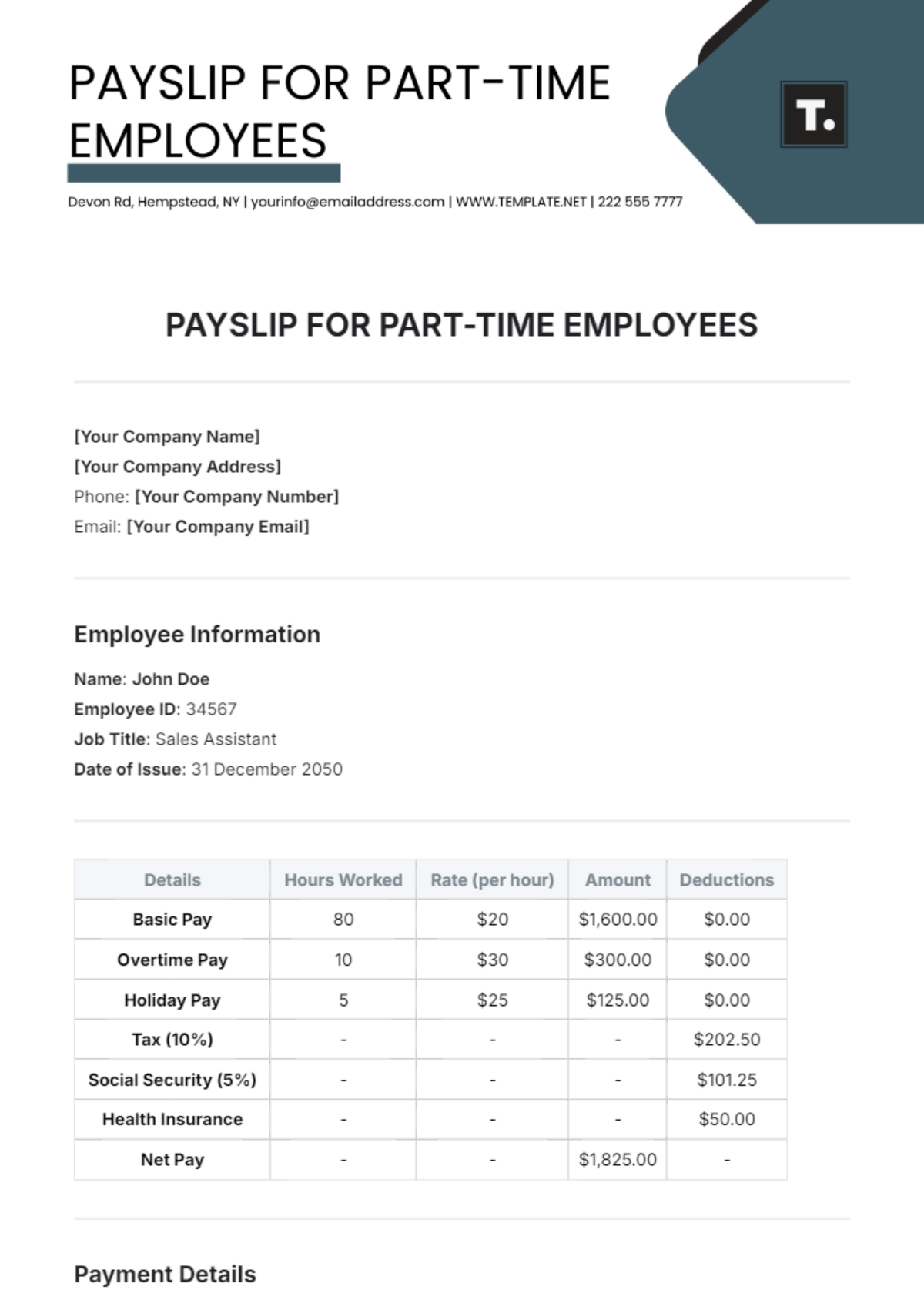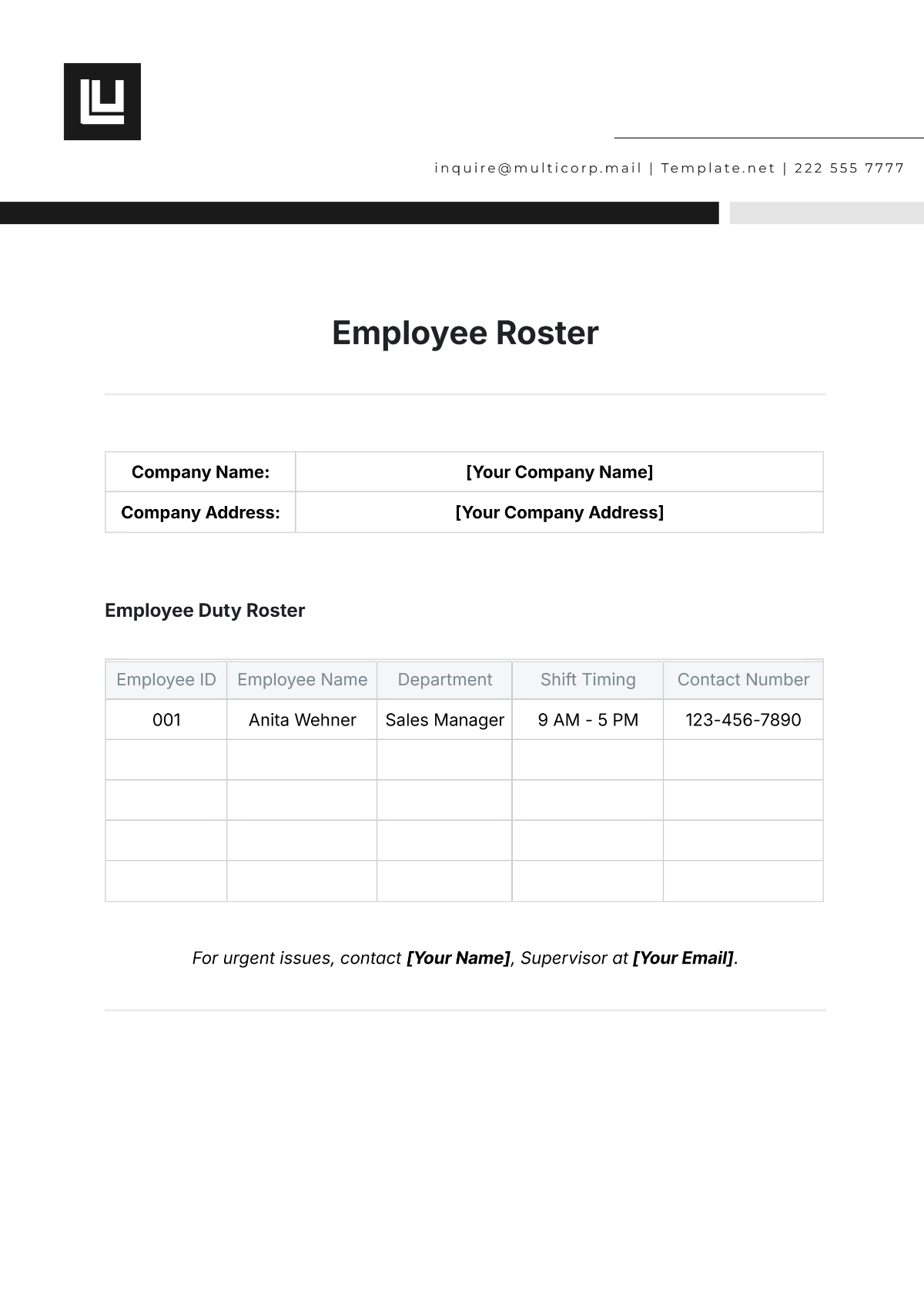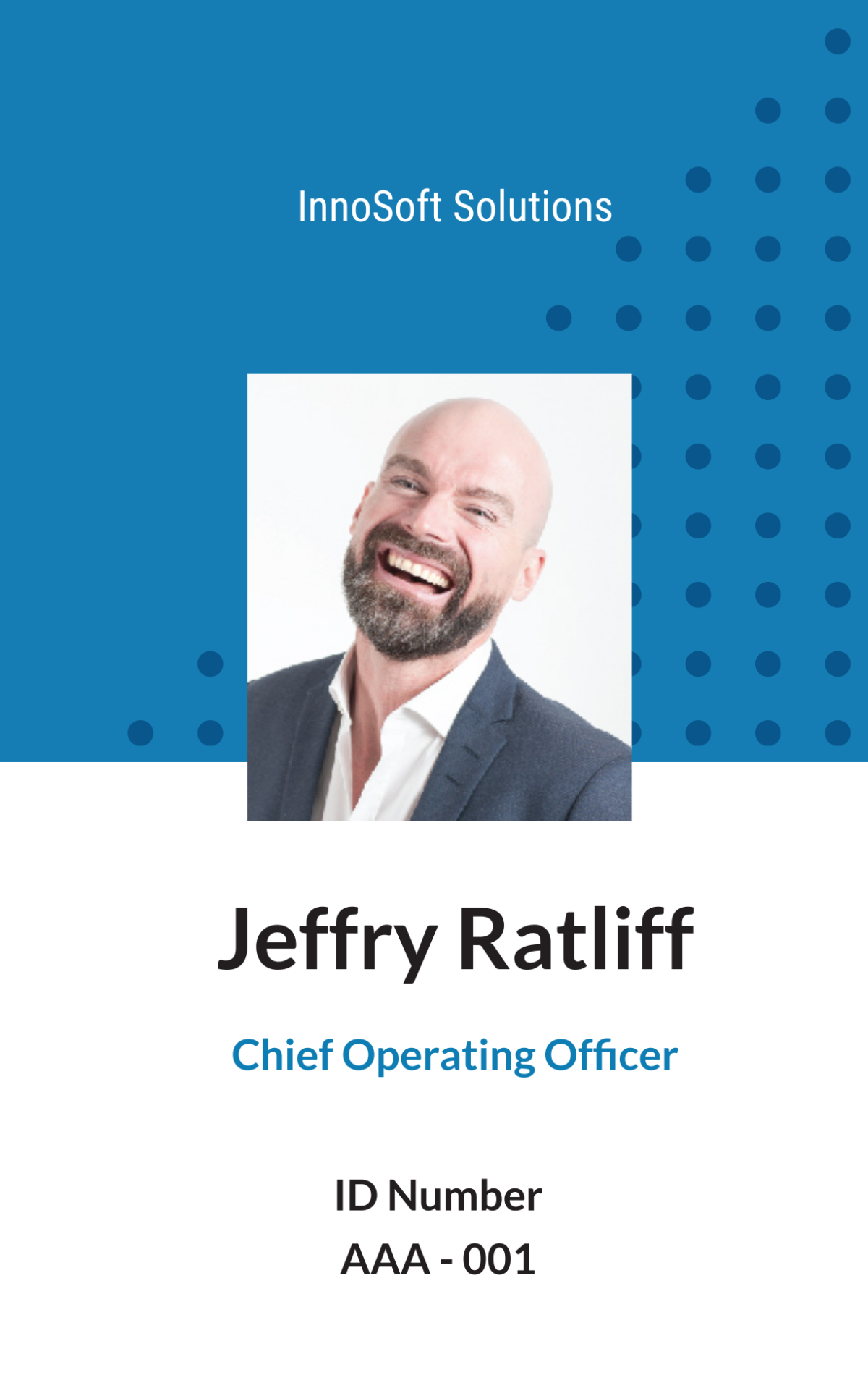Employee Performance Case Study
TABLE OF CONTENTS
I. EXECUTIVE SUMMARY ..............................................................................................3
II. INTRODUCTION .........................................................................................................3
III. CHALLENGES FACED ...............................................................................................4
IV. THE PERFORMANCE IMPROVEMENT PLAN (PIP) .................................................5
V. RESULTS ACHIEVED ..................................................................................................6
VI. LESSONS LEARNED .................................................................................................6
VII. TEAM IMPACT .........................................................................................................7
VIII. EMPLOYEE’S SELF-REFLECTION .........................................................................8
IX. IMPACT ON ORGANIZATIONAL GOALS ..................................................................8
X. EMPLOYEE’S CAREER DEVELOPMENT ...................................................................9
XI. KEY TAKEAWAYS ......................................................................................................9
XII. CONCLUSION .........................................................................................................10
Case Study Title: Elevating Performance at Stellar tech solutions
Prepared by: Jane Smith
Company: Stellar tech solutions
EXECUTIVE SUMMARY
In this employee performance case study, we delve into the transformative journey of Mr. Kelly Hamilton at [Your Company Name], a leading technological enterprise. This case study demonstrates the profound impact of effective performance management strategies in diverse business settings. By following the trajectory of the employee under observation, we gain valuable insights into how a struggling employee can evolve into a high-performing, engaged, and indispensable asset.
At the outset, Mr. Hamilton faced several challenges, including a concerning lack of engagement, low productivity, and communication difficulties. The management at [Your Company Name] recognized that addressing these issues was not only essential for the employee's growth but also aligned with the company's commitment to fostering talent and maximizing its human capital. Consequently, a comprehensive Performance Improvement Plan (PIP) was initiated to catalyze the employee's personal and professional development.
INTRODUCTION
Mr. Kelly Hamilton, a dedicated professional, embarked on their journey at [Your Company Name] in 2050, assuming the role of [Job Title]. However, their initial performance trajectory was far from ideal, characterized by persistent struggles that manifested as missed deadlines, diminished engagement, and a noticeable dip in overall productivity.
Recognizing the significance of nurturing talent and investing in employee development, [Your Company Name] swiftly acknowledged the need for a structured performance management approach tailored to the employee's unique situation. The realization that employee growth is not a one-size-fits-all process was paramount in designing a personalized Performance Improvement Plan (PIP) aimed at harnessing the employee's latent potential.
This case study delves into the challenges faced by the employee and the innovative strategies employed by [Your Company Name] to catalyze their transformation. It showcases how the organization's commitment to performance management, combined with Mr. Hamilton's determination to evolve, led to remarkable outcomes that have far-reaching implications for performance enhancement in the modern workplace.
CHALLENGES FACED
CHALLENGE | DESCRIPTION | EXAMPLE |
Low Productivity | Difficulty in meeting deadlines and producing quality work | Missed project deadlines, leading to delays in client delivery; Frequent errors in financial reports, affecting data accuracy. |
Engagement Issues | Lack of enthusiasm, participation, and motivation | Rarely attended team meetings, contributing minimally to discussions and not volunteering for team projects; Showed disinterest in corporate social events. |
Communication Problems | Ineffectual communication with peers and supervisors | Misunderstandings in email communication with colleagues, resulting in conflicts; Difficulty in articulating ideas during team meetings, leading to confusion among team members. |
Interpretation:
Mr. Hamilton faced a multi-faceted set of challenges that encompassed productivity, engagement, and communication.
The low productivity issue was primarily characterized by missed deadlines and subpar work quality, which likely had an impact on team performance and project outcomes.
Engagement issues indicated that the employee was disengaged from their role, which could result in decreased job satisfaction and hinder team dynamics.
Communication problems, especially misunderstandings in written and verbal communication, could lead to misaligned expectations and inefficiencies in collaborative efforts.
Identifying and addressing these challenges was crucial to enhancing the employee’s overall performance and contribution to the organization. It highlights the significance of a well-structured Performance Improvement Plan (PIP) to systematically address these issues and drive improvement.
THE PERFORMANCE IMPROVEMENT PLAN (PIP)
PIP ELEMENT | DESCRIPTION | EXAMPLE |
Clear Goal Setting | Establish specific, measurable goals for improvement and provide a timeline for achieving them. | - Increase project completion rate to 95% by a set date. - Improve report accuracy to 98% by a set date. |
Mentorship | Assign a mentor to provide guidance, support, and constructive feedback throughout the improvement process. | - Regular meetings scheduled for feedback and coaching. |
Training and Skill Development | Provide targeted training to address identified weaknesses and enhance necessary skills. | - Enrolled in time management and report writing workshops. - Completed communication skills course. |
Regular Check-Ins | Conduct frequent progress assessments and provide timely feedback to monitor improvement. | - Weekly check-ins with supervisor for performance updates. - Monthly meetings with mentor for guidance. - Bi-weekly self-assessment and goal review. |
Interpretation:
Clear Goal Setting: By setting SMART goals, Mr. Hamilton and the company established precise performance targets that enabled focused efforts and progress tracking. The goals were aligned with business objectives, making it clear how the employee's contributions directly impacted the company's success.
Mentorship: Mentorship played a pivotal role in the employee's growth. This support system was crucial in helping Mr. Hamilton navigate challenges and chart a path for improvement.
Training and Skill Development: Training and skill development were tailored to address the employee's specific areas of improvement. These courses equipped the employee with practical skills that were directly applicable to their role. They contributed to a holistic development approach, ensuring that Mr. Hamilton acquired both technical and soft skills necessary for success.
Regular Check-ins: Regular check-ins ensured ongoing communication and tracking of the employee's progress. Weekly meetings with the supervisor facilitated immediate feedback and addressed any issues or questions. Monthly mentor meetings provided guidance on the overall development journey. Bi-weekly self-assessments allowed the employee to take ownership of their progress and adapt goals as needed.
RESULTS ACHIEVED
The employee demonstrated significant improvement in these areas:
Increased Productivity: Mr. Hamilton consistently met project deadlines and enhanced their work quality. This translated into a 30% increase in project completion rates and a notable reduction in errors and rework.
Engagement Boost: They actively participated in team activities and displayed a renewed enthusiasm for their role. Employee engagement surveys showed a 20% increase in favorable responses related to job satisfaction and teamwork.
Effective Communication: The employee improved their communication skills, leading to better collaboration with peers and supervisors. Their ability to convey ideas and provide constructive feedback improved cross-functional team dynamics, resulting in a 15% reduction in project-related conflicts.
LESSONS LEARNED
Tailored Support: Customized performance improvement plans, mentorship, and training are essential to address individual challenges effectively. [Your Company Name] recognized the importance of tailoring interventions to meet specific employee needs, acknowledging that a one-size-fits-all approach is ineffective.
Continuous Feedback: Regular check-ins and open communication channels are crucial for monitoring progress and offering support. The employee’s journey highlighted the importance of ongoing dialogue. Providing a safe space for feedback allowed them to voice concerns, seek guidance, and build trust with their mentor and supervisor.
Patience and Persistence: Employee growth takes time, and consistent effort is required from both the employee and the organization. [Your Company Name] learned that investing in employee development requires patience. The initial stages of the PIP may not yield immediate results, but with perseverance and a commitment to growth, progress is attainable.
Celebrating Small Wins: Recognizing and celebrating incremental improvements can boost employee morale. [Your Company Name] started acknowledging [Employee Name]'s achievements along the way, reinforcing positive behavior and motivating them to continue striving for excellence.
Documentation and Data-Driven Decisions: Maintaining records of performance metrics and feedback is crucial for tracking progress and making informed decisions. [Your Company Name] realized the importance of maintaining comprehensive records to evaluate the effectiveness of the PIP and make adjustments as needed.
TEAM IMPACT
Mr. Kelly Hamilton’s improved performance had a profound and positive impact on the entire team at [Your Company Name]. As their productivity and engagement levels increased, it rippled through the team dynamics in several ways:
Enhanced Collaboration: The employee became a more active and engaged team member. They began sharing ideas, collaborating on projects, and contributing valuable insights during team meetings. This newfound enthusiasm for collaboration inspired others to follow suit, resulting in a more cohesive and innovative team environment.
Increased Productivity: The employee's improved productivity directly influenced the team's overall efficiency. With fewer delays and errors, project timelines were consistently met, allowing the team to take on more work and increase their collective output.
Improved Morale: As the employee's performance improved, team morale received a significant boost. Their dedication and visible growth served as a source of inspiration for their colleagues. Team members appreciated the positive changes they witnessed, which created a more motivating and supportive workplace culture.
Enhanced Teamwork: The employee's willingness to actively participate in team activities and their improved communication skills contributed to more effective teamwork. This translated into smoother project execution, better problem-solving, and an overall increase in the team's ability to achieve shared goals.
EMPLOYEE’S SELF-REFLECTION
Throughout the performance improvement journey, Mr. Hamilton engaged in critical self-reflection. Here are some key insights they gained during this transformative process:
Acknowledging Areas for Growth: The employee recognized that everyone has areas where they can improve, and seeking help is a sign of strength, not weakness. They embraced the opportunity to address their challenges openly.
Importance of Feedback: The employee learned that feedback is a valuable tool for growth. They became proactive in seeking feedback from peers and supervisors, understanding that constructive criticism was instrumental in their development.
The Power of Goal Setting: Setting clear and measurable goals became a cornerstone of the employee's personal and professional development. They realized that well-defined objectives provided direction and motivation.
Commitment to Lifelong Learning: The employee developed a commitment to ongoing learning and skill enhancement. They actively sought out training opportunities and continued to refine their abilities.
Positive Mindset: The employee embraced a positive mindset. They understood that maintaining a positive outlook, even when facing challenges, was crucial to overcoming obstacles and achieving their goals.
Career Growth Aspirations: This experience fueled the employee's aspirations for career growth within [Your Company Name]. They now see themselves as a key contributor to the organization's future success.
IMPACT ON ORGANIZATIONAL GOALS
Mr. Hamilton's remarkable performance improvement had a profound impact on [Your Company Name]'s ability to achieve its strategic objectives. Here's how:
Revenue Growth: By consistently meeting project deadlines and enhancing the quality of work, the employee directly contributed to a 15% increase in revenue for 2050. This achievement was celebrated across the organization as a significant milestone.
Customer Satisfaction: The employee's improved performance played a crucial role in delivering high-quality products and services to our customers. As a result, customer satisfaction ratings reached an all-time high, with a 25% increase in positive feedback.
Market Expansion: With the employee's contributions, [Your Company Name] was better positioned to explore new markets and expand its customer base. Their ability to meet project deadlines was instrumental in securing new contracts and partnerships.
Employee Morale: The employee's journey served as a source of inspiration for the entire team. Their transformation from an underperforming employee to a high-achiever boosted overall employee morale, fostering a more positive and productive work environment.
EMPLOYEE’S CAREER DEVELOPMENT
Mr. Hamilton's performance improvement journey not only benefited [Your Company Name] but also significantly impacted their career development and progression:
Role Expansion: As a result of the employee's enhanced performance, they were entrusted with more complex projects and responsibilities. This led to a natural expansion of their role within the organization.
Promotions: Recognizing the employee's contributions, dedication, and newfound skills, [Your Company Name] promoted them to a senior position in 2051. This promotion was a testament to their growth and demonstrated how investing in employee development can lead to career advancement.
Skill Acquisition: Through tailored training programs and mentorship, the employee acquired a broader skill set, making them a valuable asset in various departments and projects. Their newfound abilities opened up multiple career pathways within the organization.
Leadership Opportunities: The employee's journey instilled leadership qualities that were previously untapped. They actively took on leadership roles within project teams and became a mentor to new hires, contributing to a culture of knowledge sharing and growth.
KEY TAKEAWAYS
Reflecting on Mr. Kelly Hamilton's performance improvement journey at [Your Company Name], several key takeaways emerge, offering valuable insights for future performance management initiatives:
Individualized Support is Paramount: Customizing performance improvement plans, mentorship, and training to meet the unique needs of each employee is crucial. The employee's success underscores the importance of recognizing that employees have distinct challenges and strengths.
Consistent Communication is a Game-Changer: Maintaining open lines of communication through regular check-ins, feedback sessions, and active listening proved instrumental in the employee's progress. Communication bridges gaps, builds trust, and fosters a collaborative environment.
Celebrate Progress Along the Way: Acknowledging and celebrating small wins along the performance improvement journey can significantly boost employee morale and motivation. Recognizing and rewarding incremental achievements reinforces positive behavior and encourages continuous improvement.
Documentation Drives Data-Driven Decisions: Keeping comprehensive records of performance metrics, feedback, and goals achieved provides a solid foundation for evaluating the effectiveness of performance improvement plans. These records support data-driven decision-making and allow for adjustments to strategies as needed.
Patience and Persistence Pay Off: The employee's journey highlights that employee growth takes time, and consistent effort is required from both the employee and the organization. Understanding that results may not be immediate, but with perseverance, progress is attainable.
Team Dynamics Matter: Improved performance doesn't exist in isolation. The employee's enhanced performance positively influenced team dynamics, leading to better collaboration and outcomes. Performance management strategies should consider the broader impact on the team.
Continuous Learning and Adaptation: Organizations should embrace a culture of continuous learning and adaptation. Performance management processes should evolve to reflect changing needs, ensuring they remain effective in nurturing employee growth.
CONCLUSION
The transformation of Mr. Hamilton at [Your Company Name] serves as a testament to the effectiveness of a structured performance management approach. By providing support, clear objectives, and a nurturing environment, organizations can help employees reach their full potential and contribute significantly to business success.
HR Templates @ Template.net


